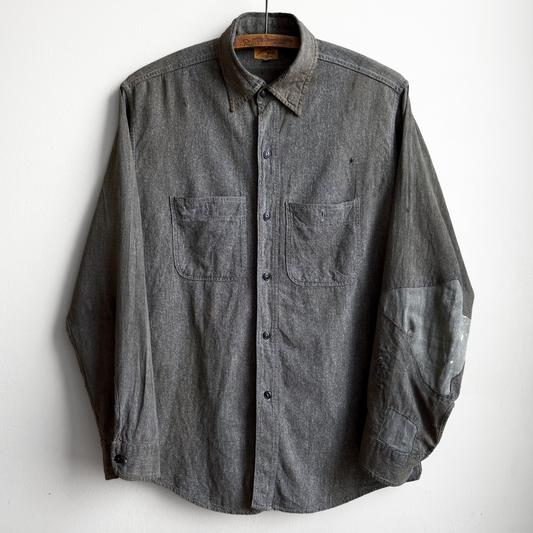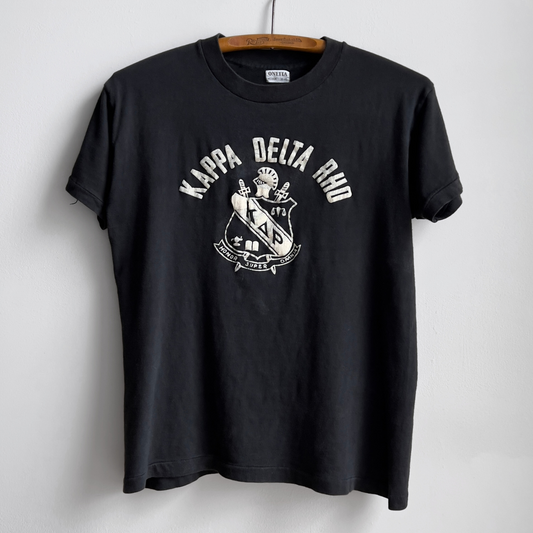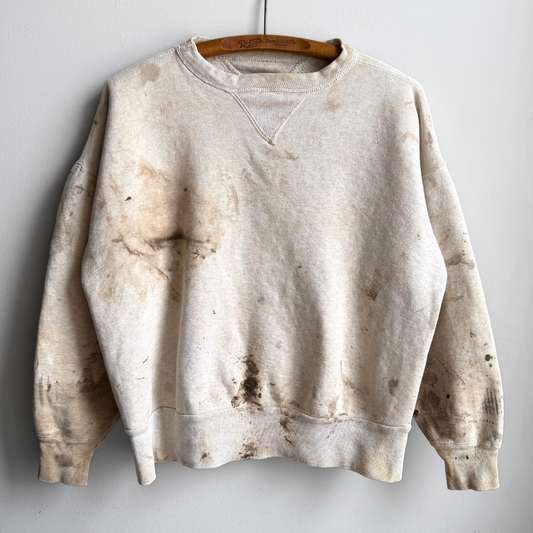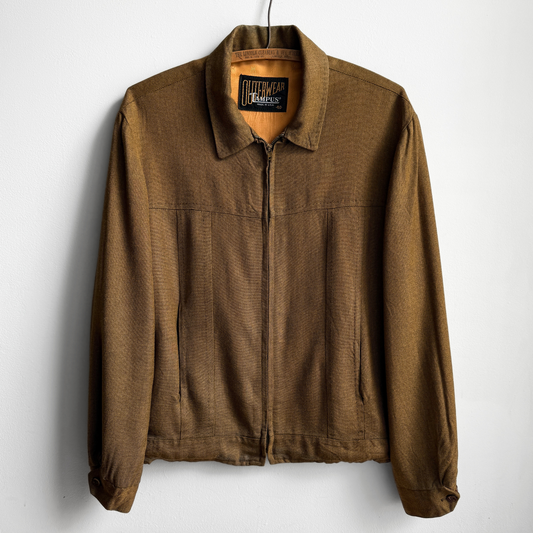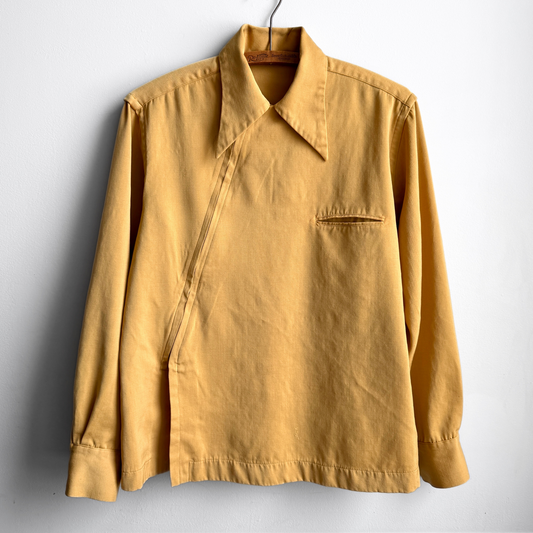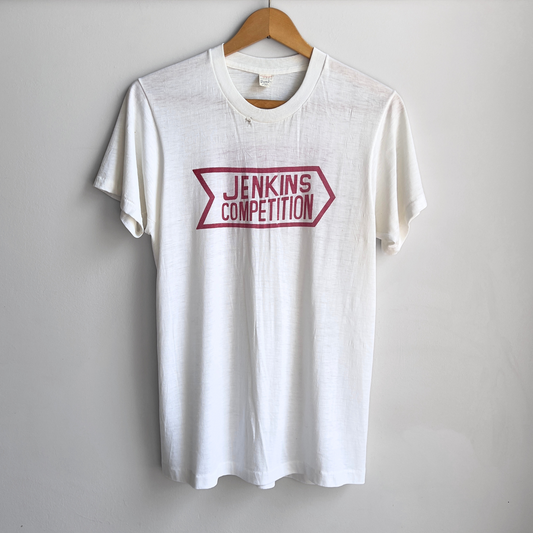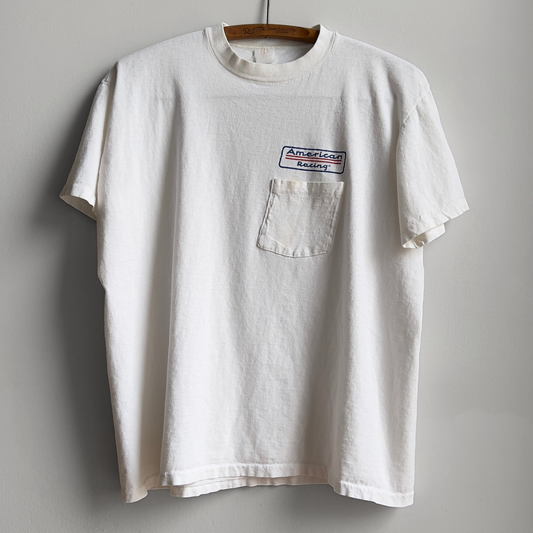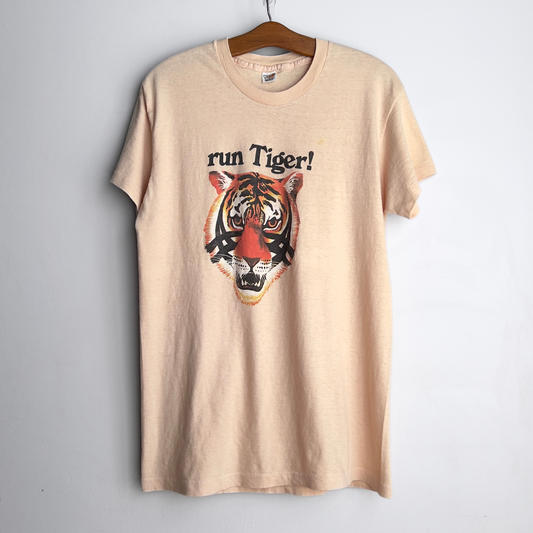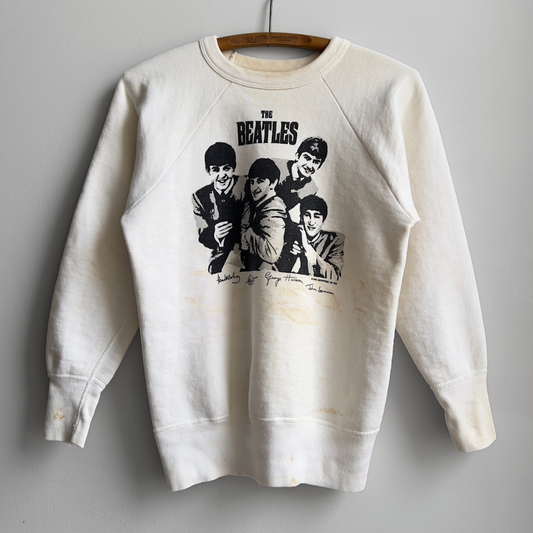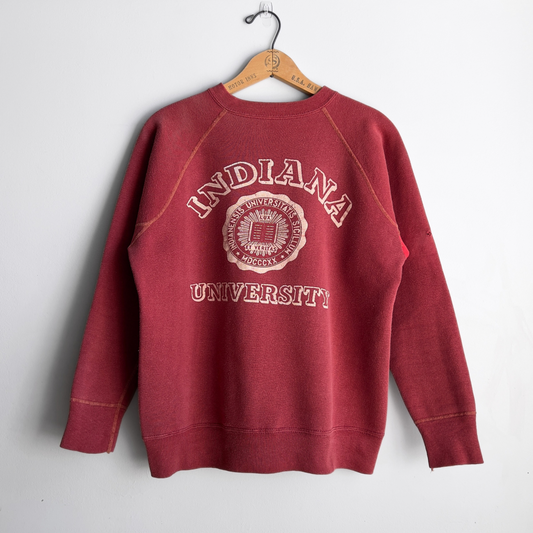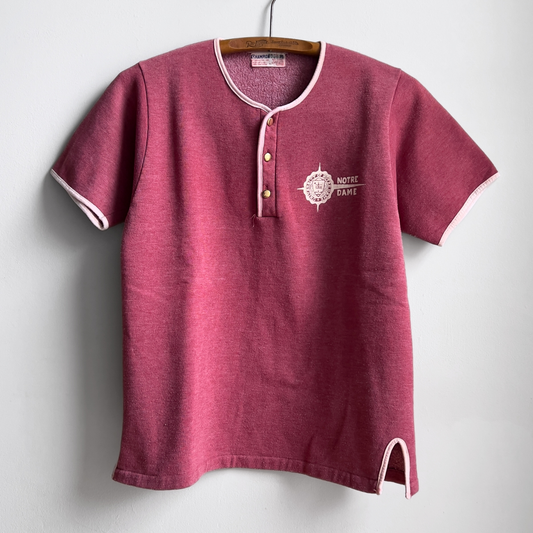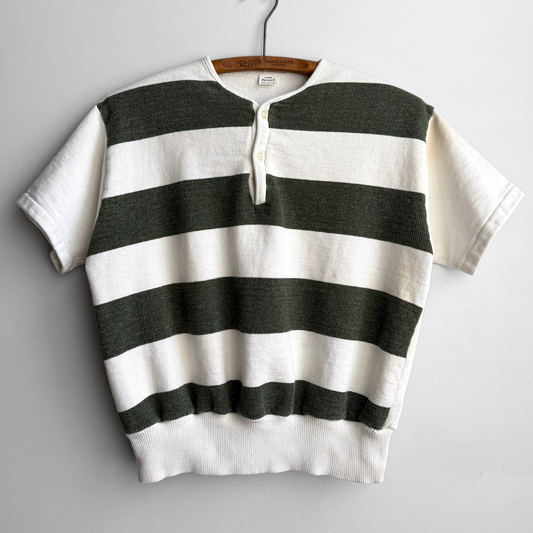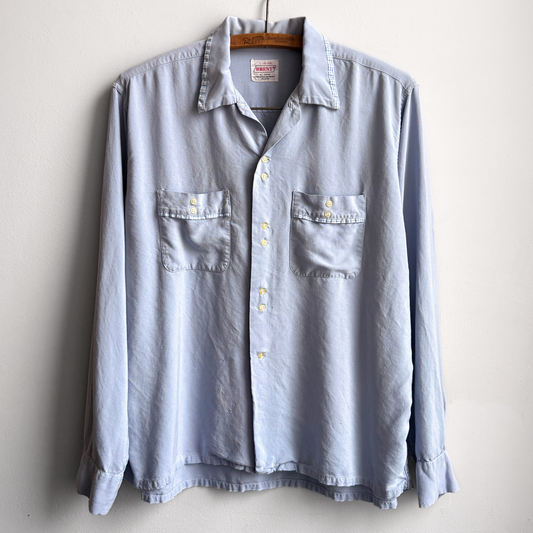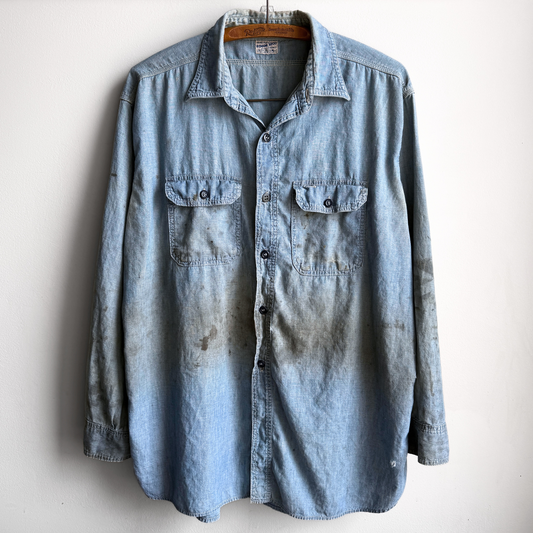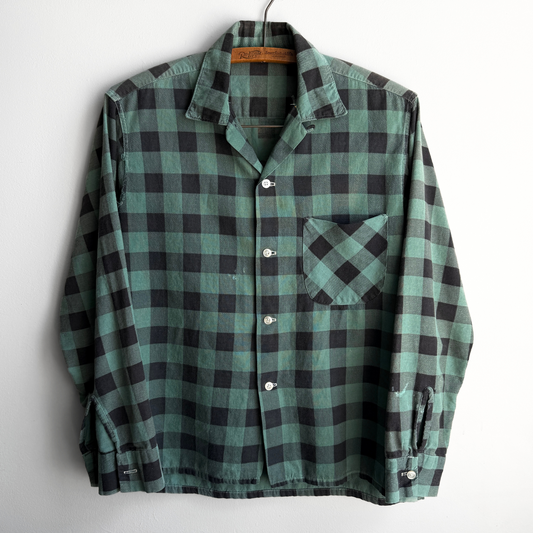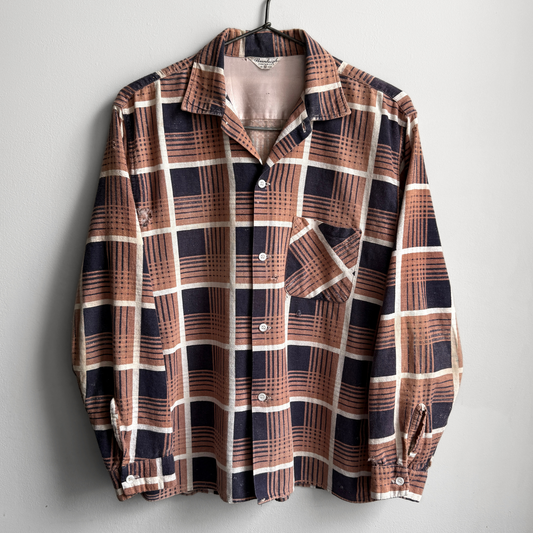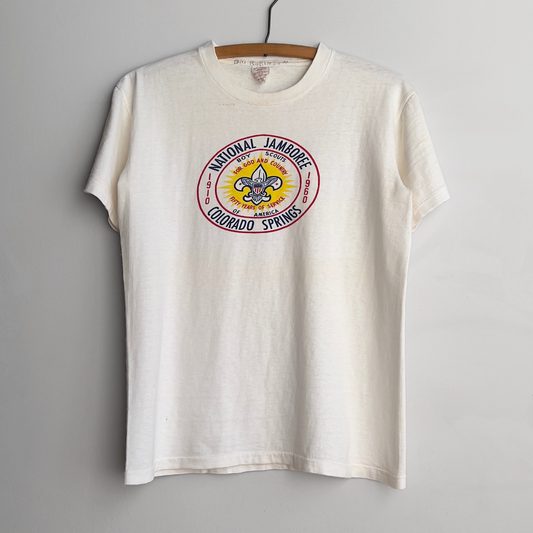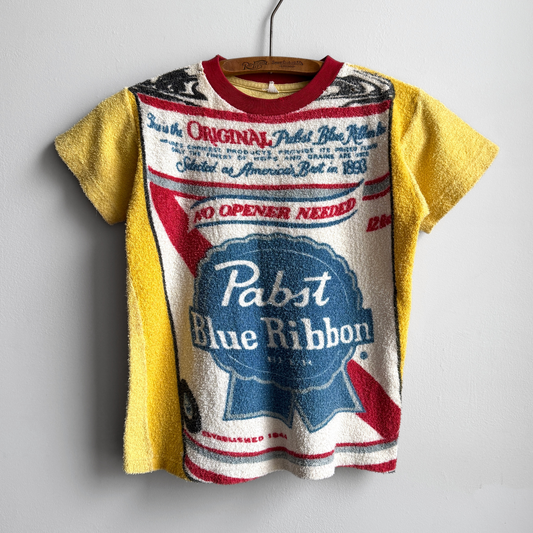ARCHIVE
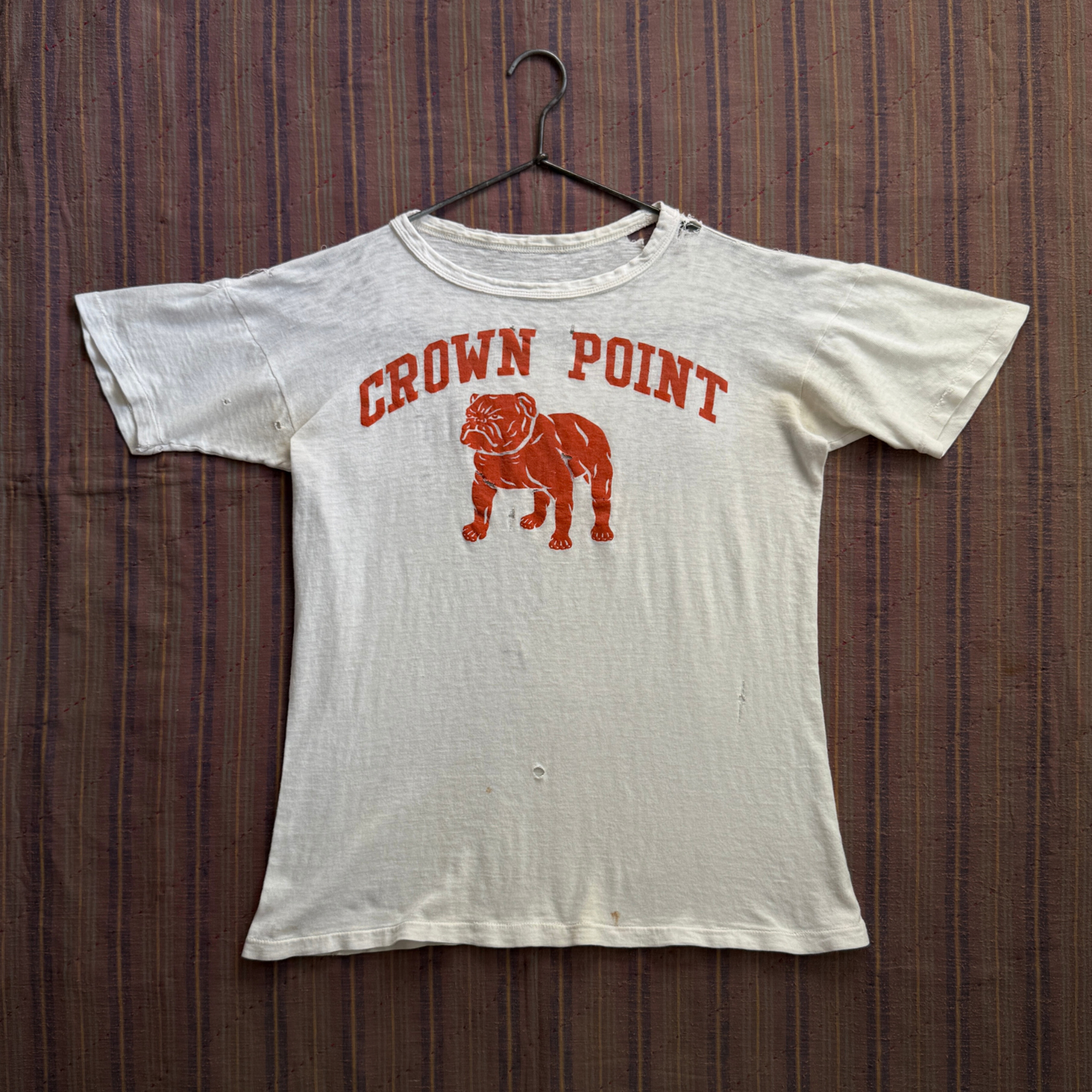
1950s
Crown Point Bulldogs Tee
Showcased here is a mid 20th century school mascot graphic tee from our local hometown, Crown Point, Indiana. It's weaved with a fine cotton material, deep orange colored graphic, raised collar, and single stitch sleeves. While Crown Point is known for their classic red and white school colors, it's interesting nonetheless to see this printed with an orange ink. Maybe we have time to blame for the color fading, but the richness says otherwise. This special t-shirt will now be apart of our shop's archive for a long time for appreciation, remembrance, and preservation.
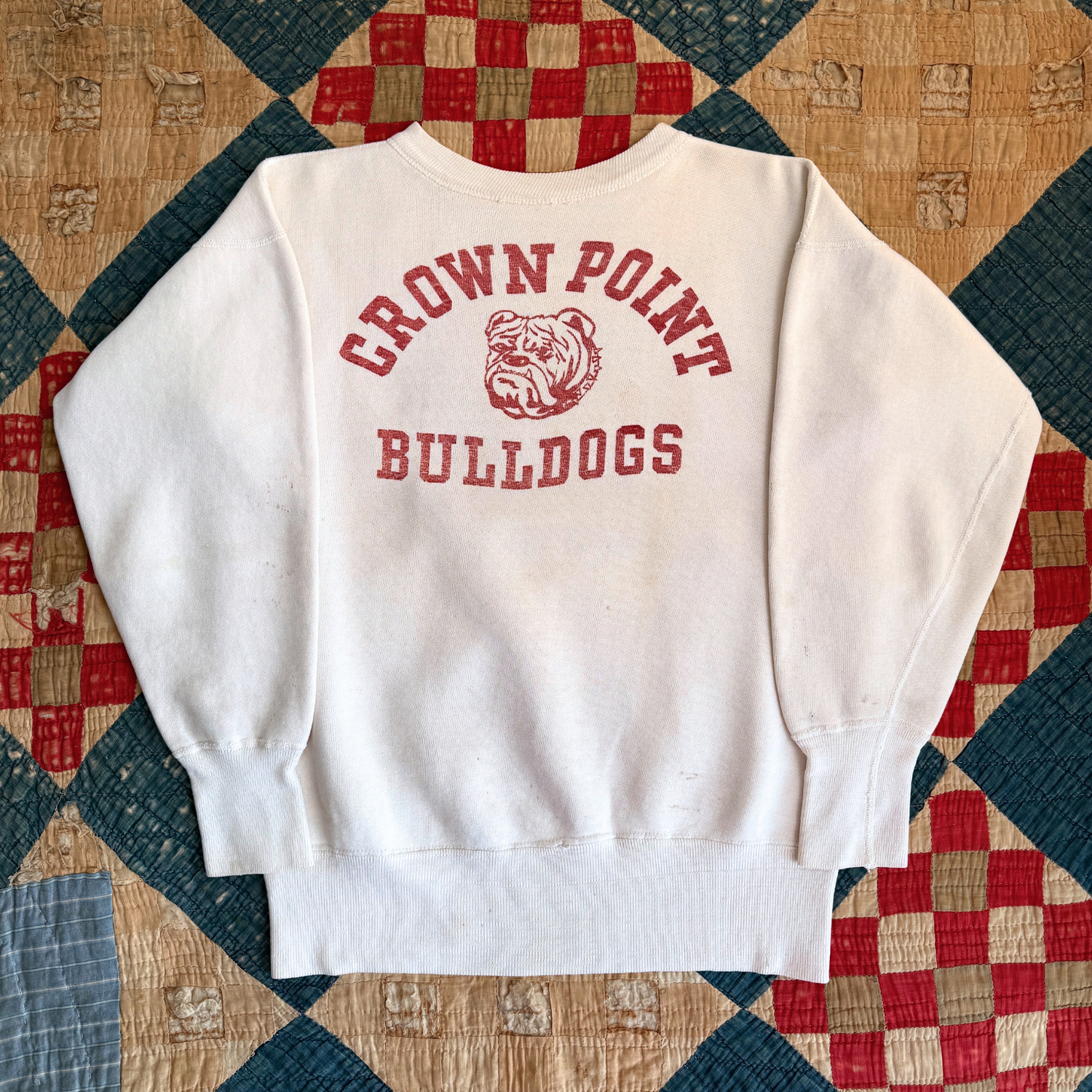
1950s
Crown Point Bulldogs Sweatshirt
The first Crown Point High School, originally called South Ward, was built in 1911 on South Court street downtown. It was relatively small in student body size, only being built for an estimated 600 students at the time. The high quickly became the center of all student activities around the square as its proximity to surrounding businesses and activities was crucial. It wouldn't be until 1939 that a new city proposed project be completed to expand the size of the school in a familiar location. Planners decided on what we know now as the lot of Wheeler Middle School, just across the street west of the original building. The second Crown Point High School was used in its entirety from the early 1940s through 2003, when the final installment of the school was built on South Main Street– further down from the historic downtown square.
This 1950s sweatshirt sports a white combed cotton material, water printed chest graphic of the Crown Point Bulldogs mascot in red, overlock stitching throughout, raised athletic collar, and elongated cuffs. The sweat was likely made by Champion based on features such as the original tag location, collar design, and overall shape.
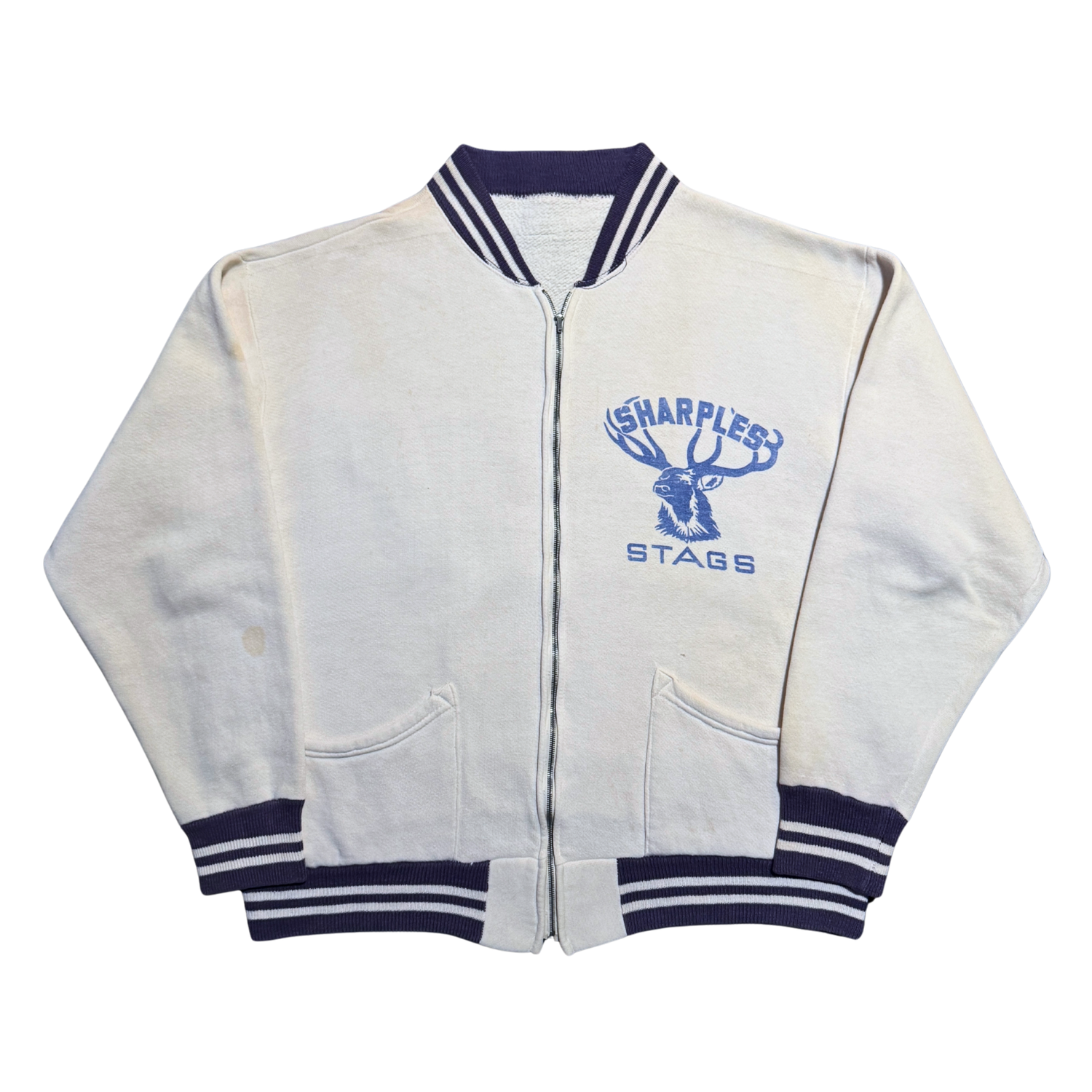
1950s
Sharples Stags Zip-Up Sweatshirt
Sharples is an unincorporated mining community in the southern hills of Logan County, West Virginia. With an estimated population of only 235 current residents, the place was rooted in tight personal relationships and built with a strong sense of community. It also has a historical significance in American history— playing a role in the infamous Battle of Blair Mountain of 1921. The Battle of Blair Mountain is considered the largest labor uprising in United States history where over 10,000 armed miners marched towards Mingo County, West Virginia in efforts to free all illegally held miners and establish a union in their southern region. The end resulted in a lot of grieving families, no unionization, and over 1,200 federal indictments.
This zip-up sweatshirt comes from a very small class who attended Sharples High School. It was luckily kept in pristine condition for its age of almost 75 plus years, preserving the overall softness of the cotton fibers. It features a Crown branded spring-lock zipper closure, striped knit cuffs and collar, slanted hand pockets, and a water based graphic print of the school’s mascot. Now we are grateful to have this as part of our archive and personal vintage collection at the shop.
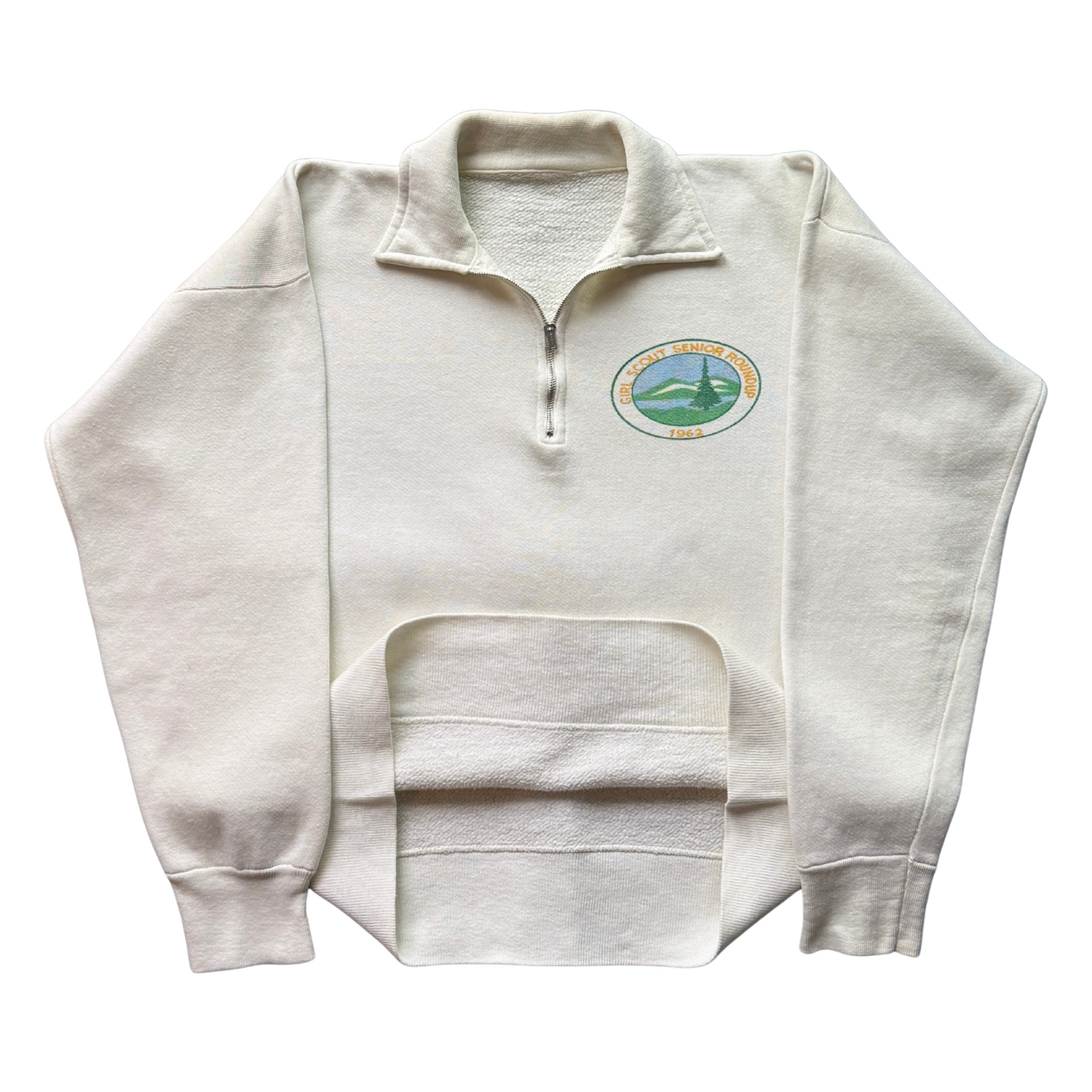
1962
Girl Scout Senior Roundup
The 1962 Girl Scout Senior Roundup was the third and final international Senior Roundup, held from July 18 to July 31, 1962, at Button Bay, Vermont. The event had the theme "Honor the Past, Serve the Future" and was held to celebrate the Girl Scouts 50th anniversary. Key features included the issuance of a special 50th anniversary stamp, guest speaker Maria von Trapp, and various activities such as campfires, square dancing, and obviously souvenir trading.
This sweatshirt is from that two week period– featuring a white cotton material with the official Girl Scout Senior Roundup graphic printed on the chest, Falcon branded 3/4 quarter zip collar, and elongated, athletic-fitting wrist and waistband.
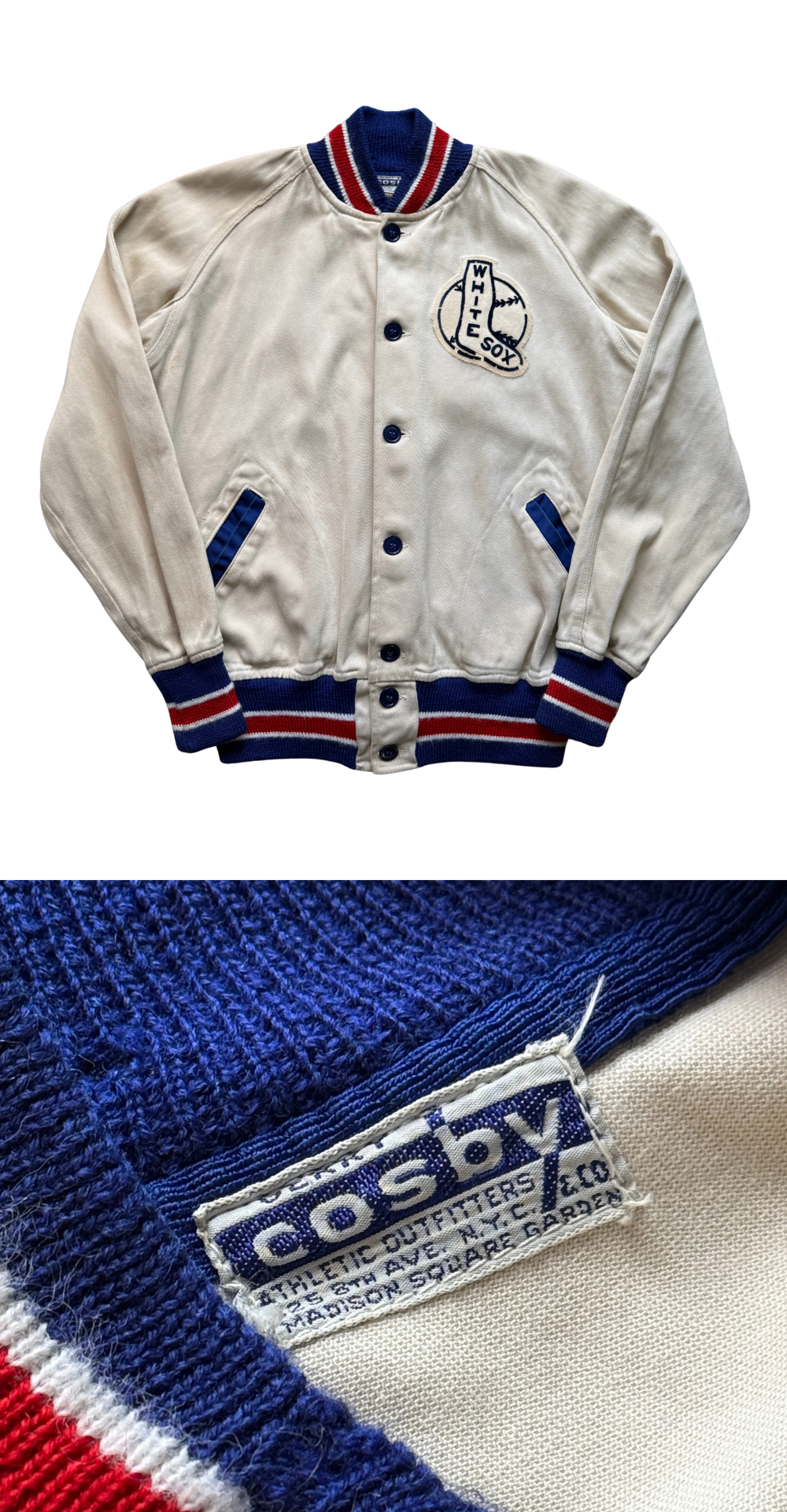
1950s
Chicago White Sox Jacket
This special button front bomber jacket is made by Gerry Cosby & Company Inc., athletic outfitters of New York. Gerry Cosby was most notable for his skills as an American ice hockey goalie. Ironically in 1928 with no actual previous experience playing hockey, he was asked by the manager of the Boston Tigers to substitute for an injured goaltender and the rest was history. Cosby would eventually be posthumously inducted into the International Ice Hockey Federation Hall Of Fame for his goalkeeping, and as a backup netminder for the New York Rangers and various other professional teams around the world.
His passion for sports was lifelong. By 1938, Cosby opened up an athletic sporting goods shop with his brother John. At the time, Cosby was responsible for the shipment of a new batch of sticks by the order of his then coach and GM of the New York Rovers, Tom Lockhart. After seeing the satisfaction of his teammates, Cosby was tasked with ordering all new equipment. The rest was said to be history too.
Headquartered at the iconic Madison Square Garden and located at 125th 8th Ave, NYC– the proximity to the surrounding city and local amatuer and professional hockey teams proved uber successful. The company supplied hockey equipment, sports jerseys, and more athletic goods such as this jacket seen here. It features a white cotton twill material with red and blue striped woven wool sleeve cuffs, waistband, and collar. The chest patch is hand stitched on and made of a flock/felt like print of the Chicago White Sox baseball team logo. The original label tag by Cosby & Co is still strongly sewn to the collar, while the size tag is sewn inside the pocket near the button front. A beautiful, and well-preserved piece of Chicago sportswear history now kept just outside the city with us.
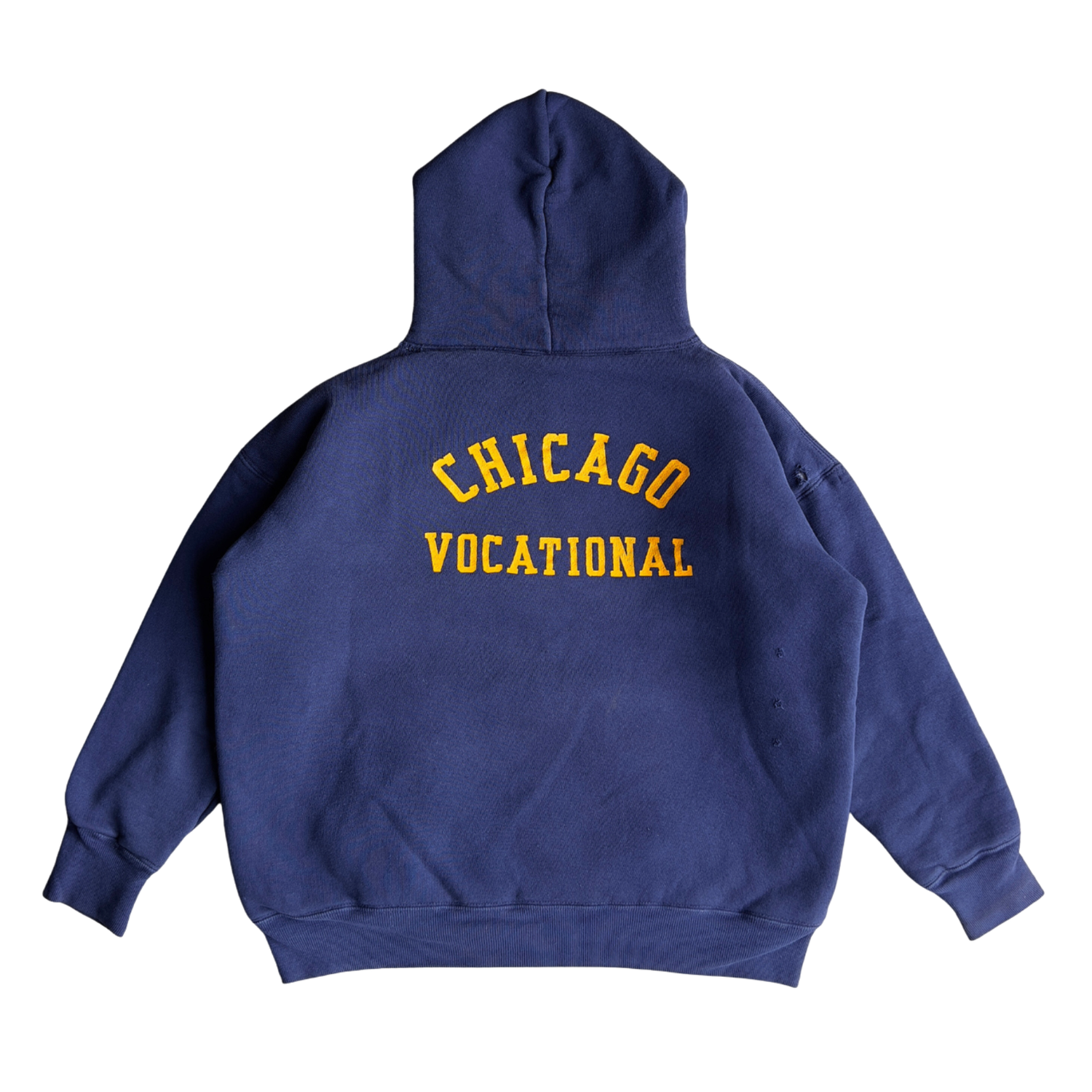
1960s
Chicago Vocational High School Double Face Hoodie
Constructed from navy blue and light grey cotton fibers, this Chicago Vocational High School double face hoodie is truly special. Featuring drawstring hood pulls, a large front kangaroo pocket, and bold yellow 'CHICAGO VOCATIONAL' lettering across the back. A remarkable hoodie reflecting the rise of academic-based sports in 1960s America.
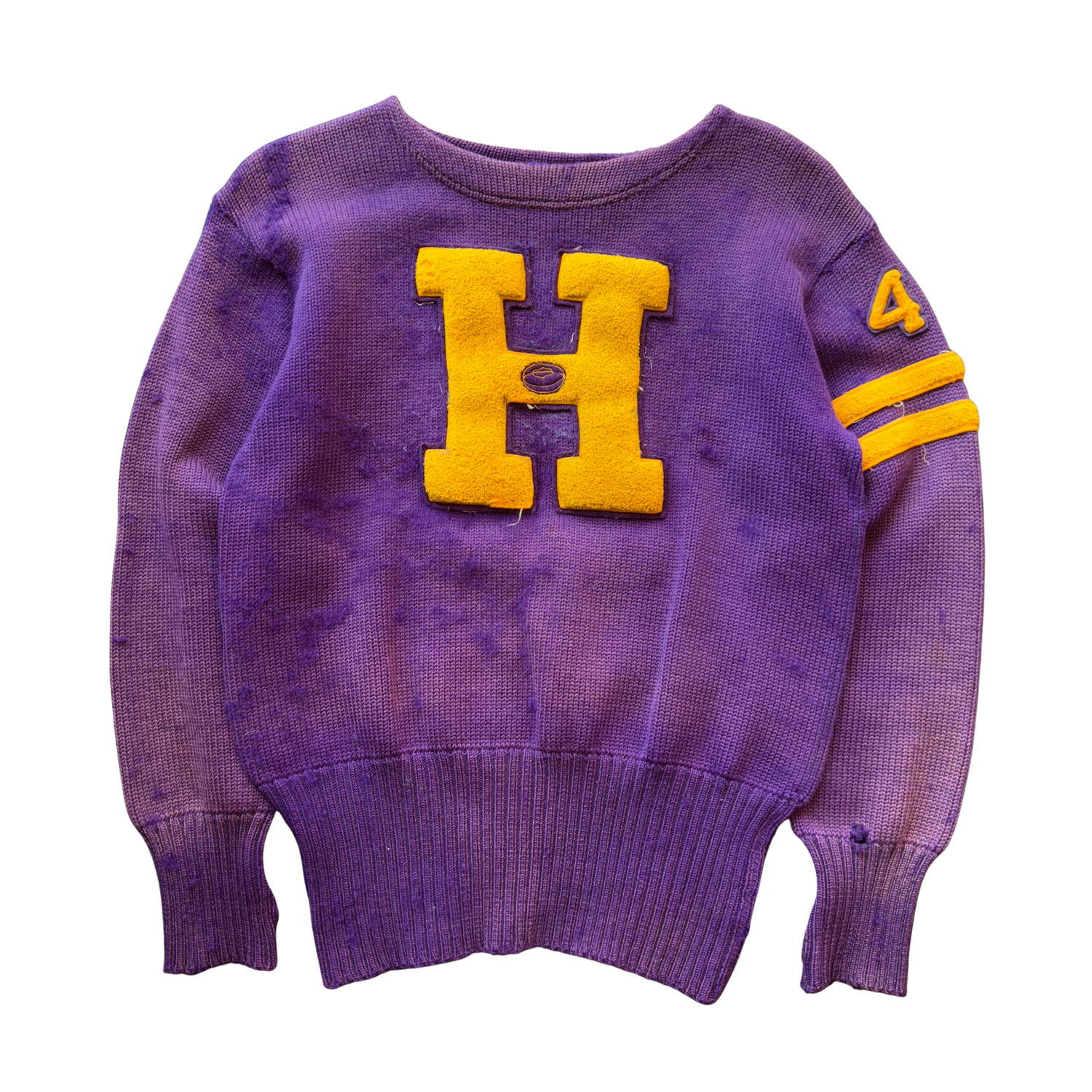
1940s
Hobart Brickies Sweater
Local school spirit, this 1940s boat-neck collar letterman sweater is blended of heavy 100% wool fibers and features a large centered chenille 'H' patch for Hobart Indiana High School Brickies Football Team. Matching yellow stripes and the number '44' are sewn into the left sleeve, with a natural sun fade and distressing produced by over half a century of life drape over the garments whole. Labeled and manufactured by Wilson Sporting Goods of Chicago, Illinois, just over forty miles northwest of Hobart, Indiana.
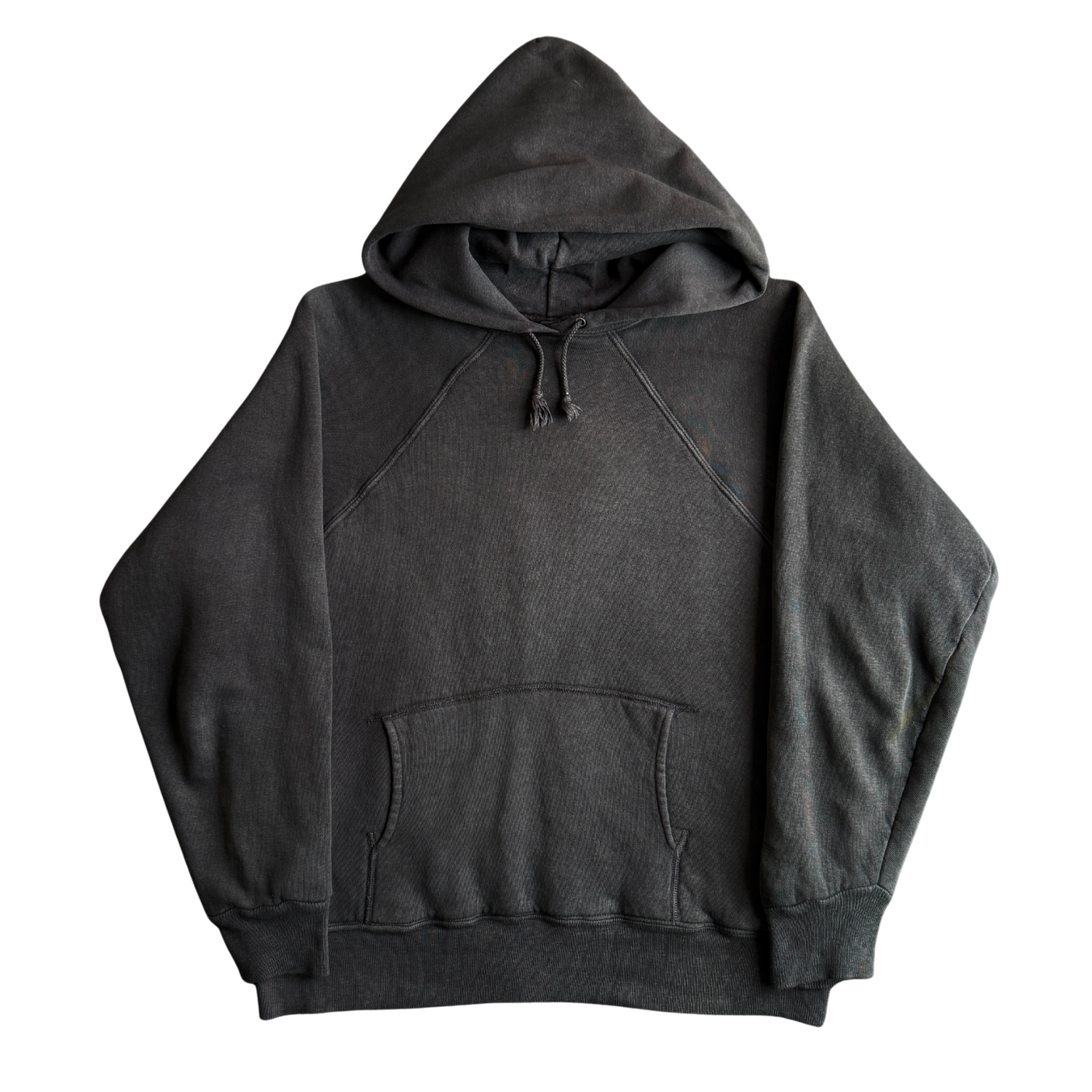
1950s
Brent Thermal Lined Hoodie
Originally knit in white cotton threads– the idea to dye this sweatshirt black came after a few unsuccessful attempts to remove tough spots. For reference, this sweatshirt was found buried underneath blankets at a dirty estate sale. This 1950s Brent hoodie, manufactured by Montgomery Ward, features a thermal interior lining throughout both the torso and sleeves, raglan style seams, large frontside kangaroo hand pocket, and pointed hood construction.
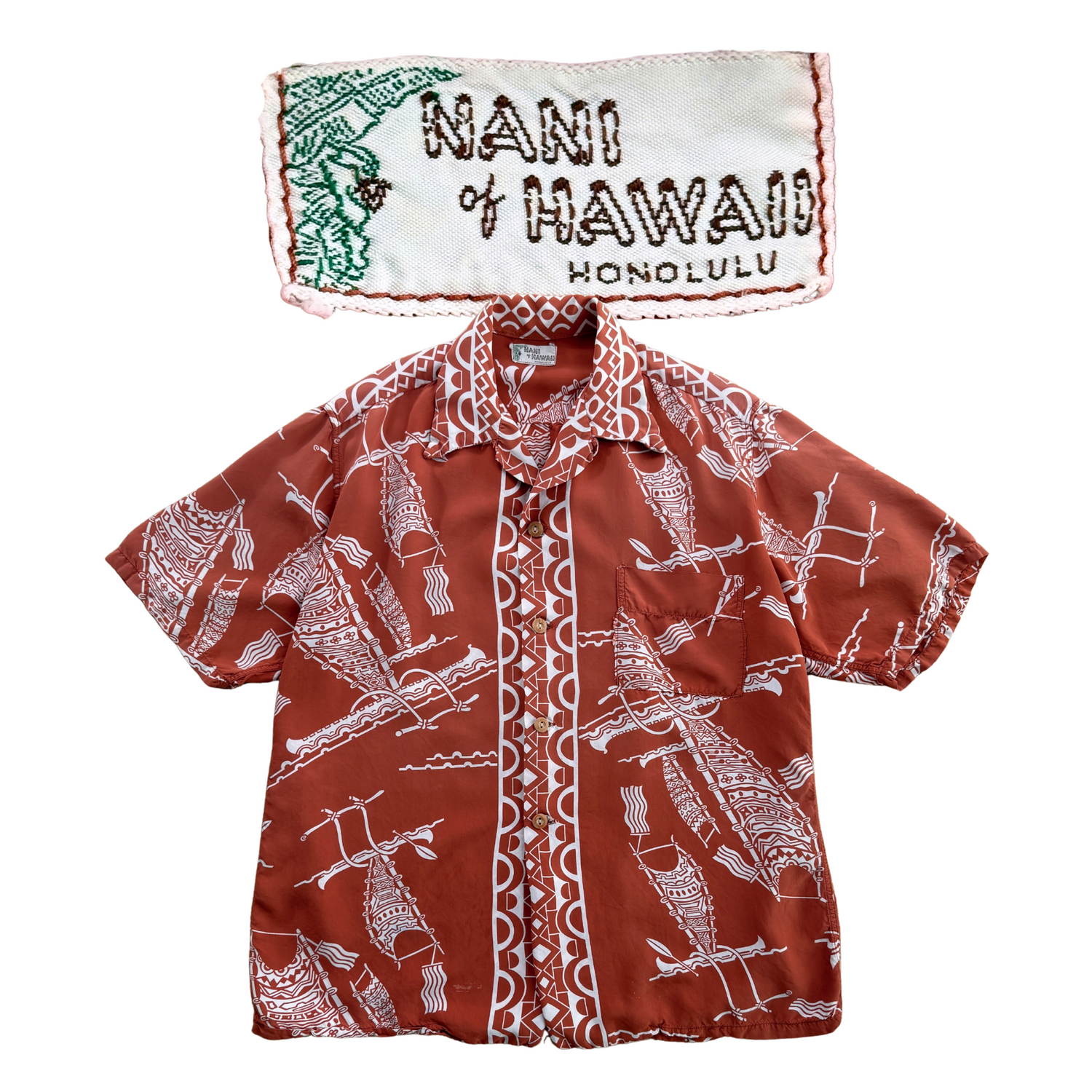
1950s
Nani of Hawaii Shirt
The brand Nani was founded in 1949 by a woman named Betty Roberson. Nani, which means beautiful, made a wide range of printed Hawaiian sportswear including men’s and women’s apparel. By 1951 with booming success, Jantzen would go on to absorb Nani as their own– still maintaining Betty as their lead designer for all things under her brand. While the 1950s saw the most in sales, by 1964 the brand would liquidate and no longer sell their iconic prints. Nonetheless, this shirt is still around today to admire with the original 'Nani of Hawaii' label tag still perfectly attached at the collar.
This particular shirt features an all over outrigger canoe and sailboat pattern printed on a silky smooth burnt orange colored rayon material, bamboo wood button front, single squared chest pocket, Hawaiian/Polynesian style geometric border print around the collar, back shoulders, and button front. This may be an earlier made shirt by the Nani brand– as the woven label tag and absence of any other symbols besides the location of Honolulu. In perfect condition, this beautiful vintage Hawaiian shirt will be staying out for a while in our shop.

1940s
Jantzen Polar Bear Sweater
Jack Fox & Sons was a men’s clothing department store established in 1912 and located on the corner of Hohman Ave and Fayette Street in downtown Hammond, Indiana. The store was recognized nationally for having the highest dollar volume per-square-foot of floor space of any men’s clothier in the country during the 1950s. Among the likes of brands such as Jantzen, as seen branded on the sweater here, Jack Fox & Sons also manufactured in-house brand garments from local tailors and makers around Northwest Indiana. Just across the street was Penney’s and other major department names quickly followed suit and turned Hammond into a shopping hub. Ominously though, a Purdue study done in 1959 on the projected success of the business district of Hammond showed an actual decline and eventual death— stating the lack of expansion was going to be the end of the area’s reign. And it was true, by the 1970s Jack Fox & Sons would liquidate and close its doors to the public forever.
This sweater is particularly special due to the overlapping branding of the label tag. The original sweater was made by Jantzen and tagged accordingly– while Jack Fox & Sons used the negative space to print their own store branding. This detail, added onto the fact that this shop was just a few minutes away from where we’re based now, it makes for a very rare and special piece.
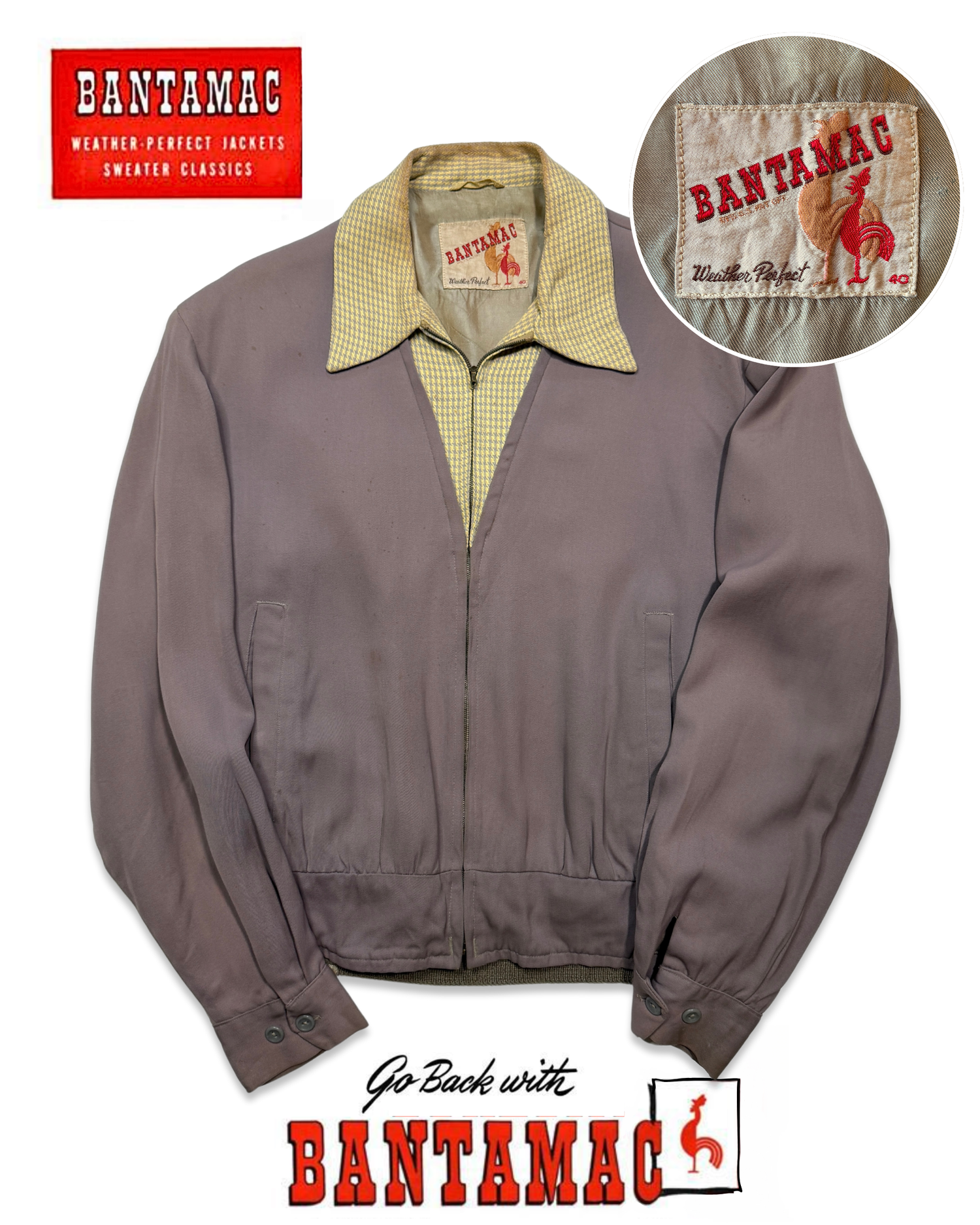
1950s
Gabardine 'Ricky' Jacket
This beautiful ‘Weather Perfect’ lightweight gabardine jacket made by Bantamac features a light purplish grey base color, unique v-neck style collar with a yellow geometric houndstooth patterned undertone, silky rayon lining, and cropped, formal style waist fit. The zipper is branded by Crown and has a spring-pull zipper head and locking flay-lay mechanism. See the embroidered logo label tag sewn inside the neckline– showing a rooster in bold red and orange threads, jacket functional 'weather perfect' stamp, and the measured size of 40.
Bantamac was a Canadian men's outerwear brand famously known for their weather-resistant and lightweight jackets. Formed in the early 20th century by a Dutch born native by the name of Benjamin Breier, the original company name was known as Marcus Breier & Sons. During the Great Depression of the 1930s, Breier would move headquarters to Amsterdam, New York and trademark the name 'Bantamac' for his newly pioneered weather-resistant, stylish outerwear– especially the brand's sportswear type jackets. Also during wartime, Bantamac fulfilled government contracts to supply the United States Navy and Army with their outerwear.
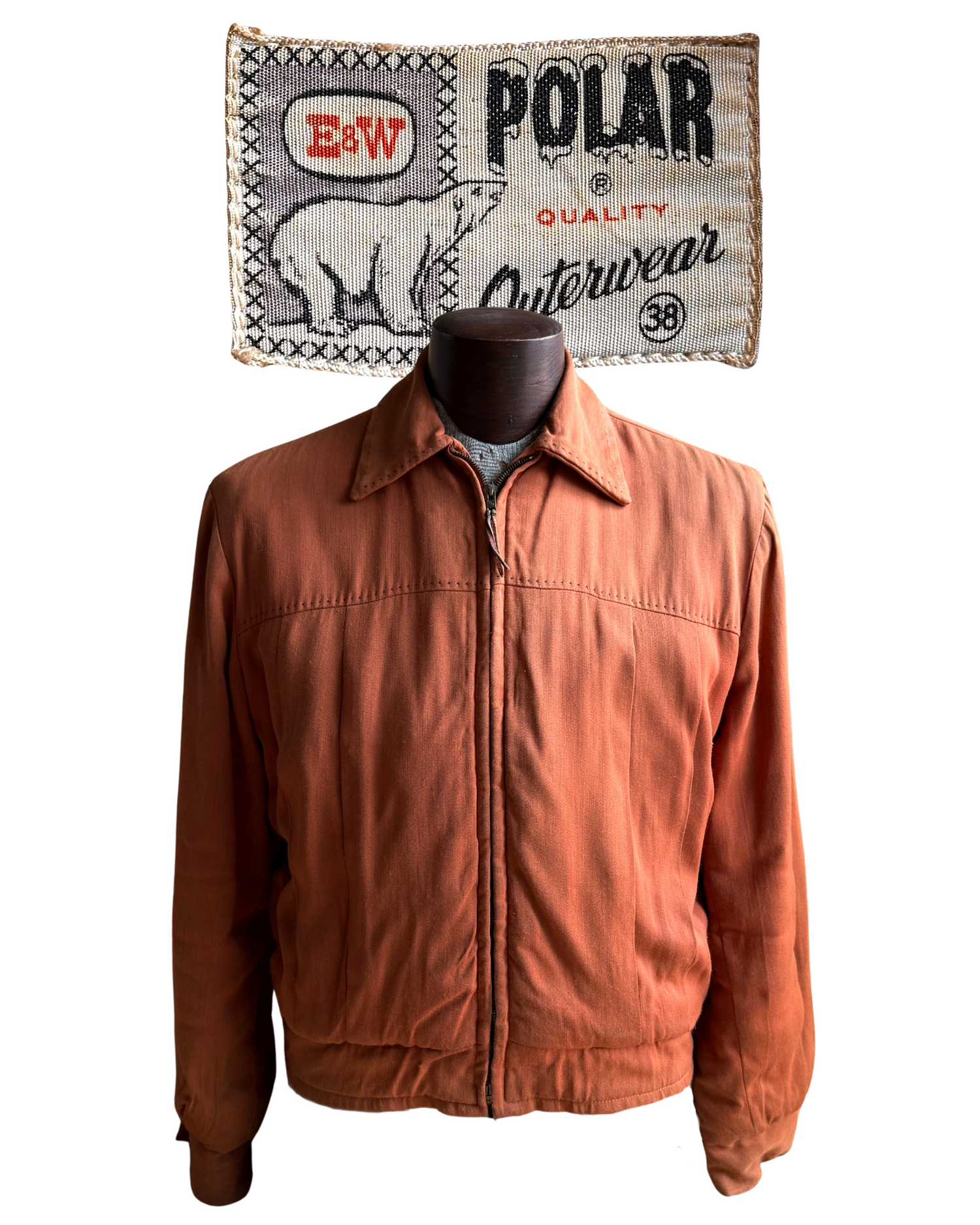
1950s
E&W Gabardine Jacket
Manufactured by E&W Clothing House, this 1950s ‘Polar Quality Outerwear’ gabardine jacket features a gorgeous faded orange material, vertical torso pleats with visible brown single-needle edge stitching, and a heavy quilted liner interior. The zipper pull is made by Crown and features a matching colored leather tassel pull for easier zipping.
E&W was established in 1889 in Freeport, Illinois. The first store was opened on the south side of Main Street between Walnut and Galina. The 'E' stood for Ennenga, named after the founder George Ennenga and the 'W' stood for Wagner, his father in-law and original business partner. Specializing in men's fine clothing, the store's initial inventory consisted of frock coats and top hats to knickers and Norfolk-style outerwear. After over a century in business, E&W would close its doors in 1990 but leave behind some of the best looking vintage garments today.

1930s
Salt and Pepper Work Shirt
This absolutely stunning work shirt dates back to the 1930s, and features a range of amazing details including a grey salt and pepper colored chambray cotton fabric, chin strap tab collar, catseye metal buttons, and gorgeous repairs. While the origins of salt and pepper fabric are a bit of a mystery, it has historical contexts dating all the way back to the Middle Ages— being used for intricate tapestries and seen as a symbol of sophistication amongst society's elites.
The subtle blend of dark threads against light creates such a color that matches almost any outfit and can be worn interchangeably among all different colors of trousers. The intense amount of hand repairs and reconstruction all throughout this shirt makes for a truly remarkable and wearable piece of American workwear history that is almost a century old. Unfortunately there is no branding or label tags present, so identifying a source has been near impossible.
Have more information? Send us a message.
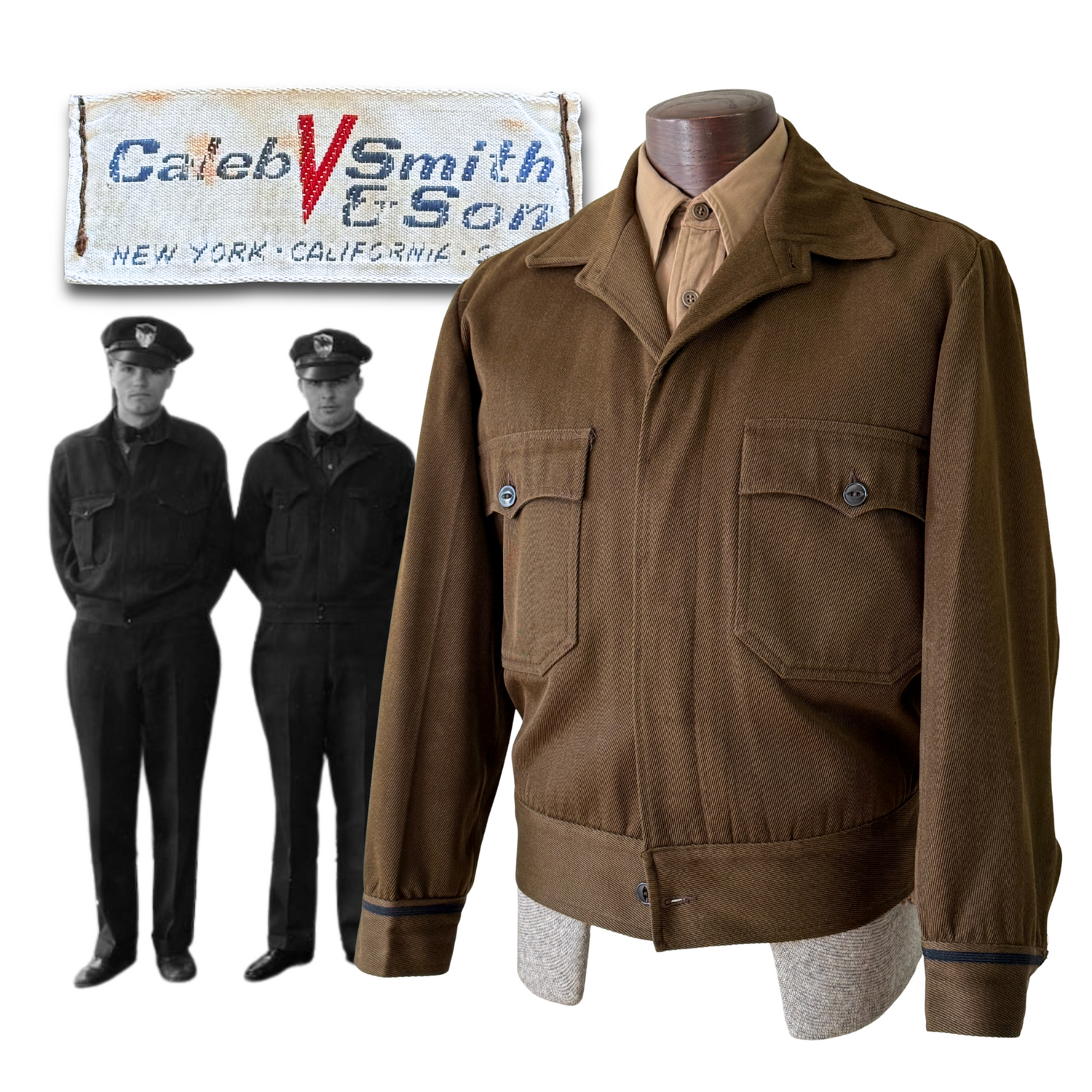
1950s
United Parcel Service Jacket
This special jacket, made intentionally for UPS delivery drivers during the time, features a brown whipcord material sturdy enough to withstand the long routes of an experienced driver. The company was established on the West coast in 1907, specially Seattle, where two teenagers would go on to form the world’s largest package delivery service. Originally, they were named the ‘American Messenger Company. Their iconic ‘United Parcel Service’ (UPS) name would come to be debuted in 1919 with expansion to Oakland, California.
The standard brown uniform has been timeless throughout the history of UPS, as seen above in almost flawless condition. One of the founders, James Casey, chose this brown based on the brown paint used on Pullman train cars and its ability to hide dirt. The exact name of the brown was termed ‘Pullman Brown’ by UPS. You can also see a reference picture shown aside the jacket– showcasing young UPS delivery drivers in the 1950s lined up for a candid picture outfitted in their brown jackets.
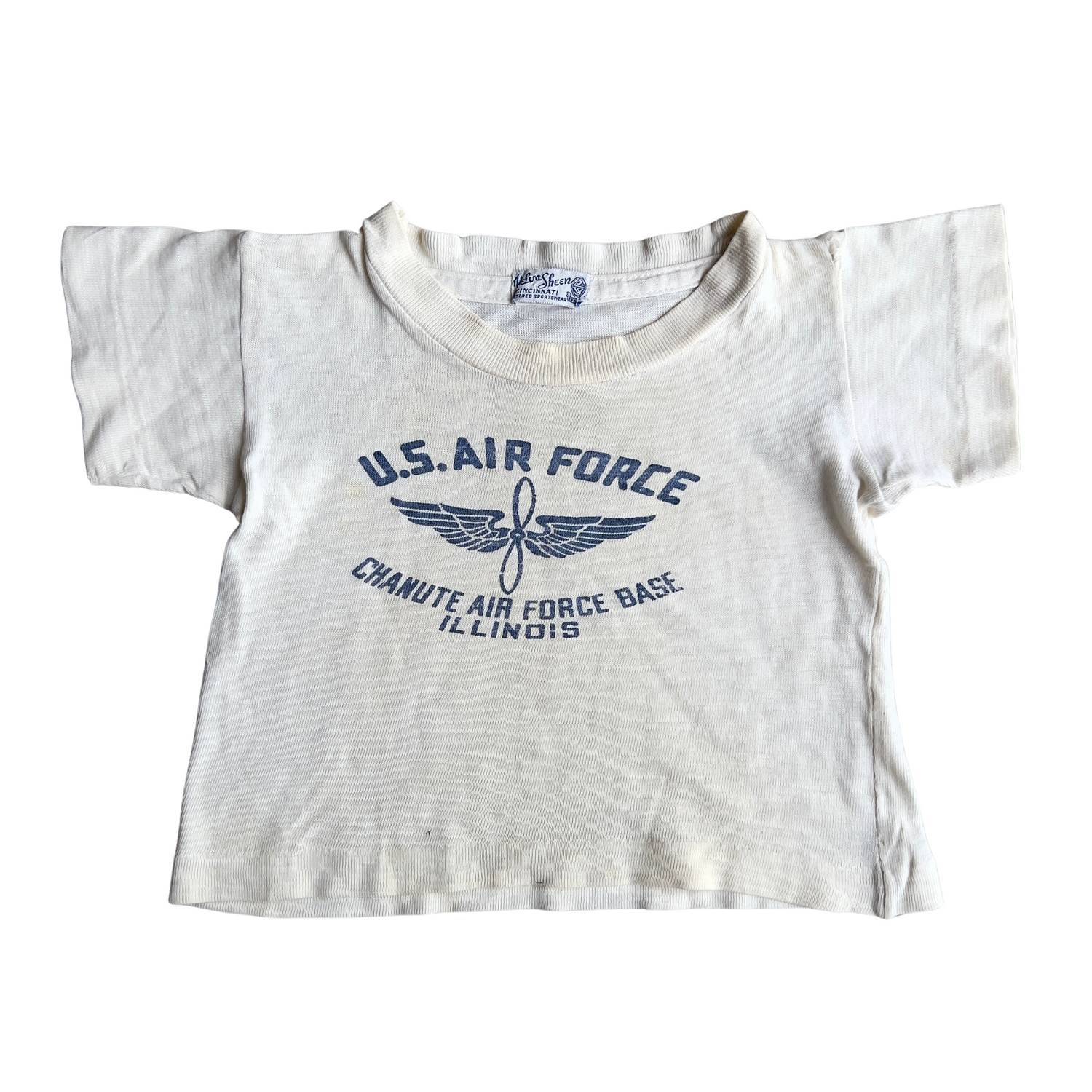
1960s
U.S. Air Force Tee
Chanute Air Force Base was established by the U.S. government in the early summer of 1917. Leasing roughly 650 acres of land in agricultural Illinois to begin training operations for young WWI pilots. During the 1940s, Chanute Air Force Base would become one of our country’s leading state-of-the-art military facilities, strengthening thousands of ground troops and boosting air defense training techniques for the second world war.
Eventually, Chanute Air Force Base would see its final days in 1993 when it’s glory would be ultimately striped— and the site be deemed a health and safety hazard to the surrounding environment from decades of experimental testing and equipment waste.

1940s
Herringbone Twill / HBT
The herringbone twill standard uniform wasn’t formally introduced until 1941 when the second world war began. Before this, Army soldiers wore a combination of denim tops, trousers, and hat for fatigue duties— rotating between the khaki uniform for summer activities. This jacket in particular is the second pattern variant, or also contractually known as 45D, made in March of 1943 and produced through the end of the war. The 45D was the final pattern identical to the 45B, except for the newly added gas flap underneath the button front and tack buttons on the rear of the collar for an anti-gas hood. The first specifications for the HBT jacket did not include gas flaps but were added after the risk of chemical warfare. This jacket features both specifications, and the metal 13 point star buttons are such a defining detail.
The pants are special too— as they are a pair of P-1947 USMC HBT pants. The difference between the USMC P-41 and P-47 pants are almost nonexistent, as the P-41 was manufactured during wartime and the P-47 post.
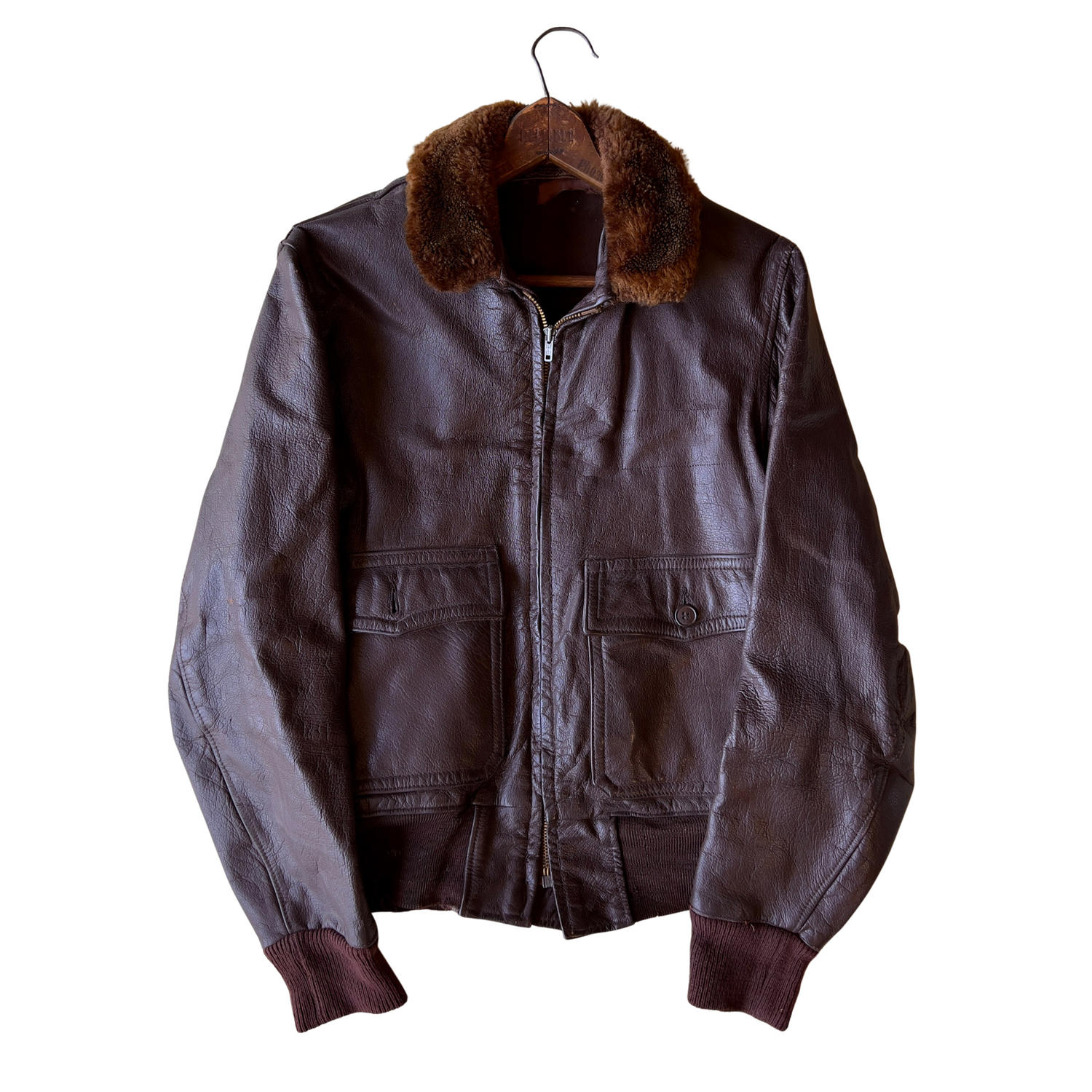
1950s
G-1 Flight Jacket
Originating as the Navy's M-422A model in the 1930s and later revised into the G-1 model, this jacket is as iconic of militaria as you can get. The G-1 flight jacket features an all brown goatskin or cowhide leather shell, satin nylon liner, and a mouton sheep or synthetic fiber collar. It also featured notable details such as underarm gussets for ensured movement in the cockpit, a cropped waist fitting design with knitted cuffs, and heavy brass zipper closure. With numerous button-through pockets, the wearer was guaranteed adequate storage for belongings.
While all contracted versions of the G-1 Flight Jacket has perforated 'USN' or 'USCG' inside the wind flap, this particular jacket does not feature it, nor any sort of contract inscriptions or labels. This leads to believe this was a civilian model, made from the same manufacturers of the contracted models during the wartime. Special nonetheless.
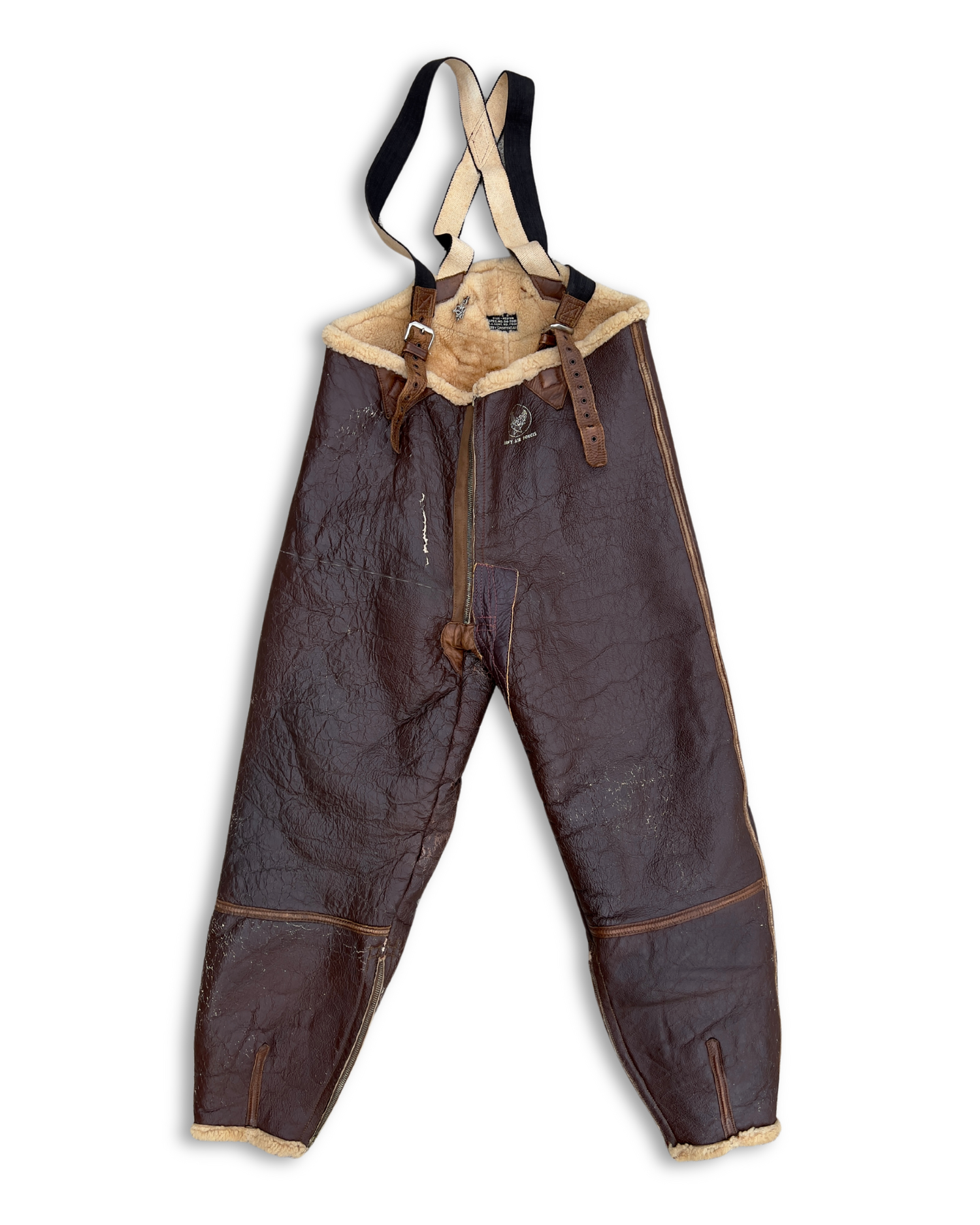
1940s
TYPE B-1 TROUSERS
Originating in the 1930s from the A-3 and A-5 model flight trousers, the later B-1 model would be standard issue for any ground crew members and flight mechanics working in harsh, cold temperatures that didn’t involve flying. Sometimes, flight and ground crew service members would trade clothing to better fit their taste in style and lead to mismatched sets.
These trousers feature a thick brown sheepskin leather shell, shearling lining throughout the whole garment, Talon branded zippers on the fly and ankle zips, and elastic suspenders with a silver ‘ARMY AIR FORCES’ print near the waist.
-
 Sold out
Sold out1930s Chambray Cotton Work Shirt
Regular price $0.00 USDRegular price -
1940s Salt & Pepper Chambray Work Shirt
Regular price $0.00 USDRegular price -
1950s Kappa Delta Rho Fraternity Black Cotton Tee
Regular price $0.00 USDRegular price -
1940s Penney's Double V Distressed White Sweatshirt
Regular price $0.00 USDRegular price -
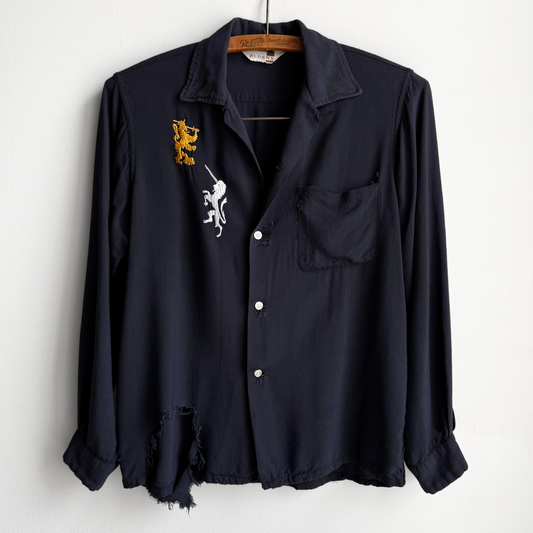 Sold out
Sold out1960s Black Rayon Loop Collar Shirt
Regular price $0.00 USDRegular price -
1950s Brown & Orange Ricky Gabardine Jacket
Regular price $0.00 USDRegular price -
1940s Yellow Diagonal Zip Up Gabardine Shirt
Regular price $0.00 USDRegular price -
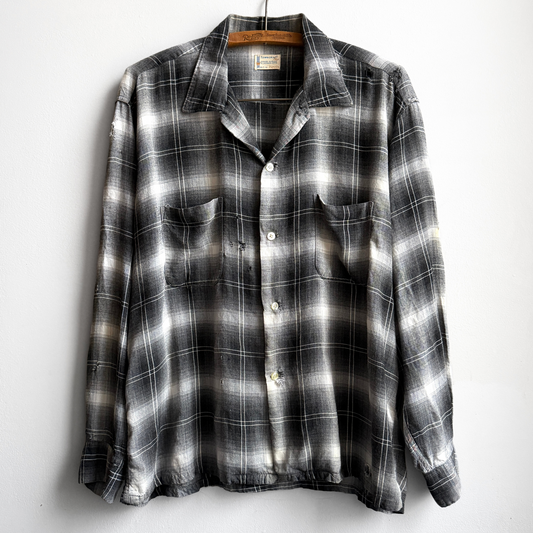 Sold out
Sold out1950s Black Shadow Plaid Rayon Shirt
Regular price $0.00 USDRegular price -
1970s John Lennon Rock 'N' Roll Graphic Tee
Regular price $0.00 USDRegular price -
1960s Jenkins Competition Drag Racing Tee
Regular price $0.00 USDRegular price -
1970s American Racing White Graphic Pocket Tee
Regular price $0.00 USDRegular price -
1970s Run Tiger Onitsuka Japan Asics Promo Tee
Regular price $0.00 USDRegular price -
1963 The Beatles Band Nems Enterprises Graphic Sweatshirt
Regular price $0.00 USDRegular price -
1960s Indiana University Faded Red Cotton Raglan Sweatshirt
Regular price $0.00 USDRegular price -
1960s Notre Dame Red Henley Sweatshirt Tee
Regular price $0.00 USDRegular price -
1950s Striped Short Sleeve Sweatshirt
Regular price $0.00 USDRegular price -
1960s Brent Baby Blue Double Button Rayon Shirt
Regular price $0.00 USDRegular price -
1950s Hercules Rough Shod Chambray Work Shirt (XL)
Regular price $0.00 USDRegular price -
1960s Green & Black Plaid Loop Collar Shirt
Regular price $0.00 USDRegular price -
1950s Brown & Black Plaid Cotton Shirt
Regular price $0.00 USDRegular price -
1960s National Jamboree Colorado Springs Boy Scouts of America Tee
Regular price $0.00 USDRegular price -
1960s Pabst Blue Ribbon Beer Terry Cloth Tee
Regular price $0.00 USDRegular price -
1960s Wild Bill Hickok Deadwood In The Black Hills Baby Tee
Regular price $0.00 USDRegular price -
1960s Mickey Mantle & Roger Maris New York Yankees Souvenir Sweatshirt
Regular price $0.00 USDRegular price -
1960s Pennsylvania Military College Short Sleeve Sweatshirt
Regular price $0.00 USDRegular price
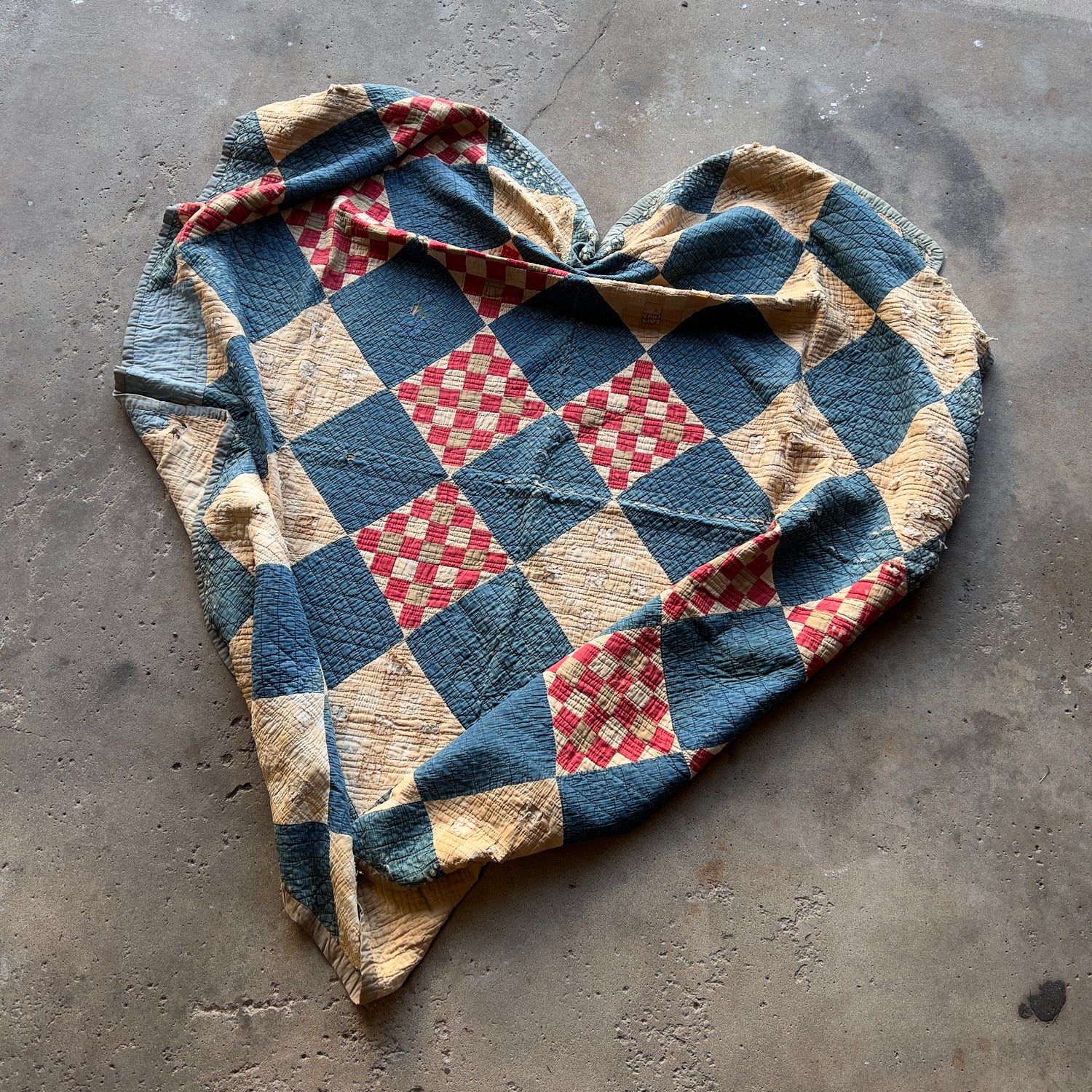
1800s
Freedom Quilt
Reflecting the enduring emotion of many Americans during the mid to late 19th century, this unique handmade quilt features a diamond style patchwork layout composed of red, white, and blue cotton fabric squares. While time has run its fair share of miles around this particular quilt, the details and final condition it was discovered in make it truly a remarkable piece of Americana.
Check out some of our recent posts on Instagram and Facebook @threadcountvintageco for a closer look and how this antique quilt will be repurposed throughout it's time here at our shop.
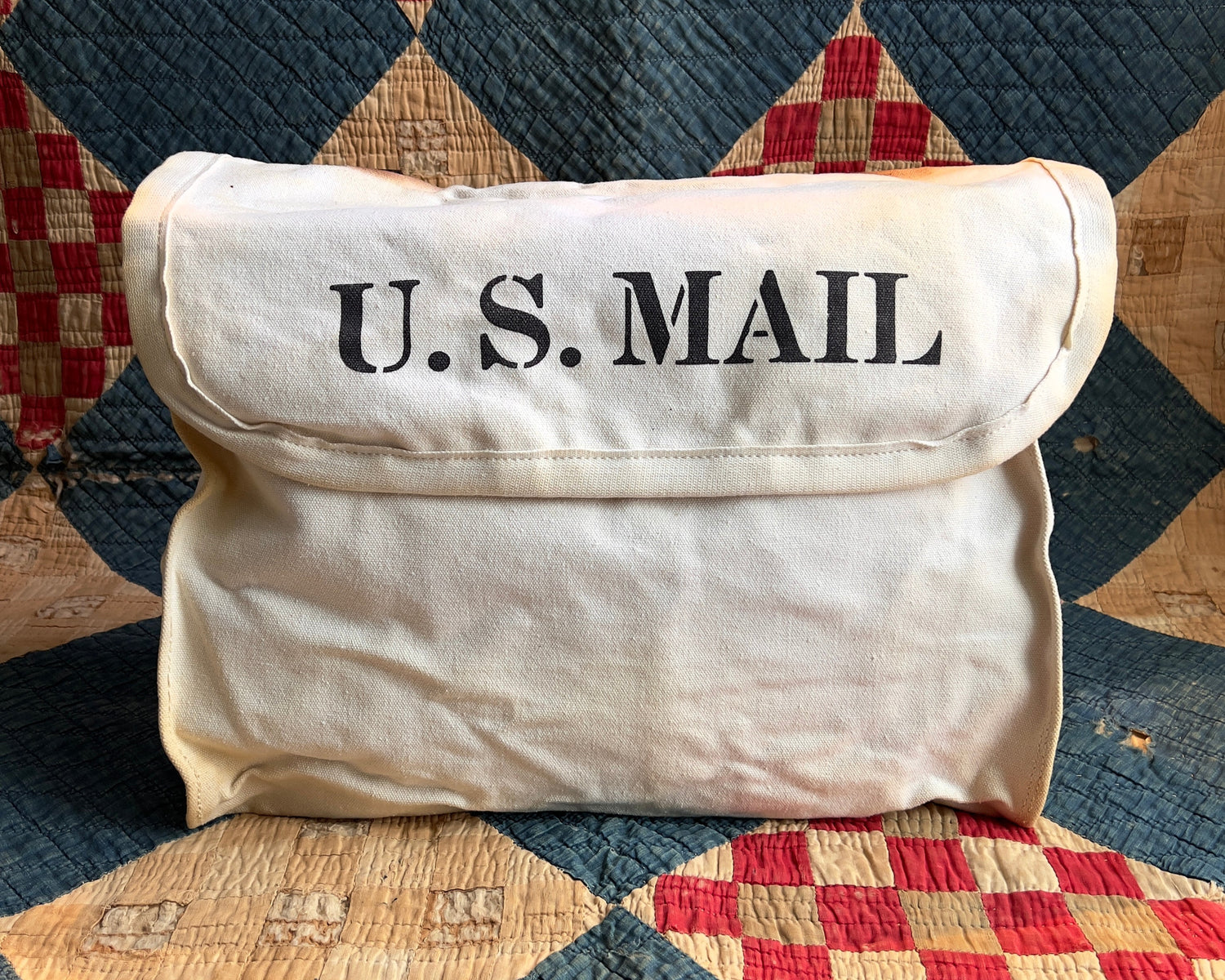
1950s
U.S. Mail Carrier Bag
This 1950s heavy duty canvas bag features a large stencil on the bag flap of 'U.S. Mail' in black, reinforced edges for daily wear protection, voluminous carrying capacity, and leather mounted steel shoulder strap loops on the back. While this bag does not have its original shoulder strap, the condition alone is surely enough to keep around the shop. Serving as a crucial accessory to American mail and our daily lives, it now serves as a historical piece and testament to the quality craftsmanship produced during the 1940s - 1970s.
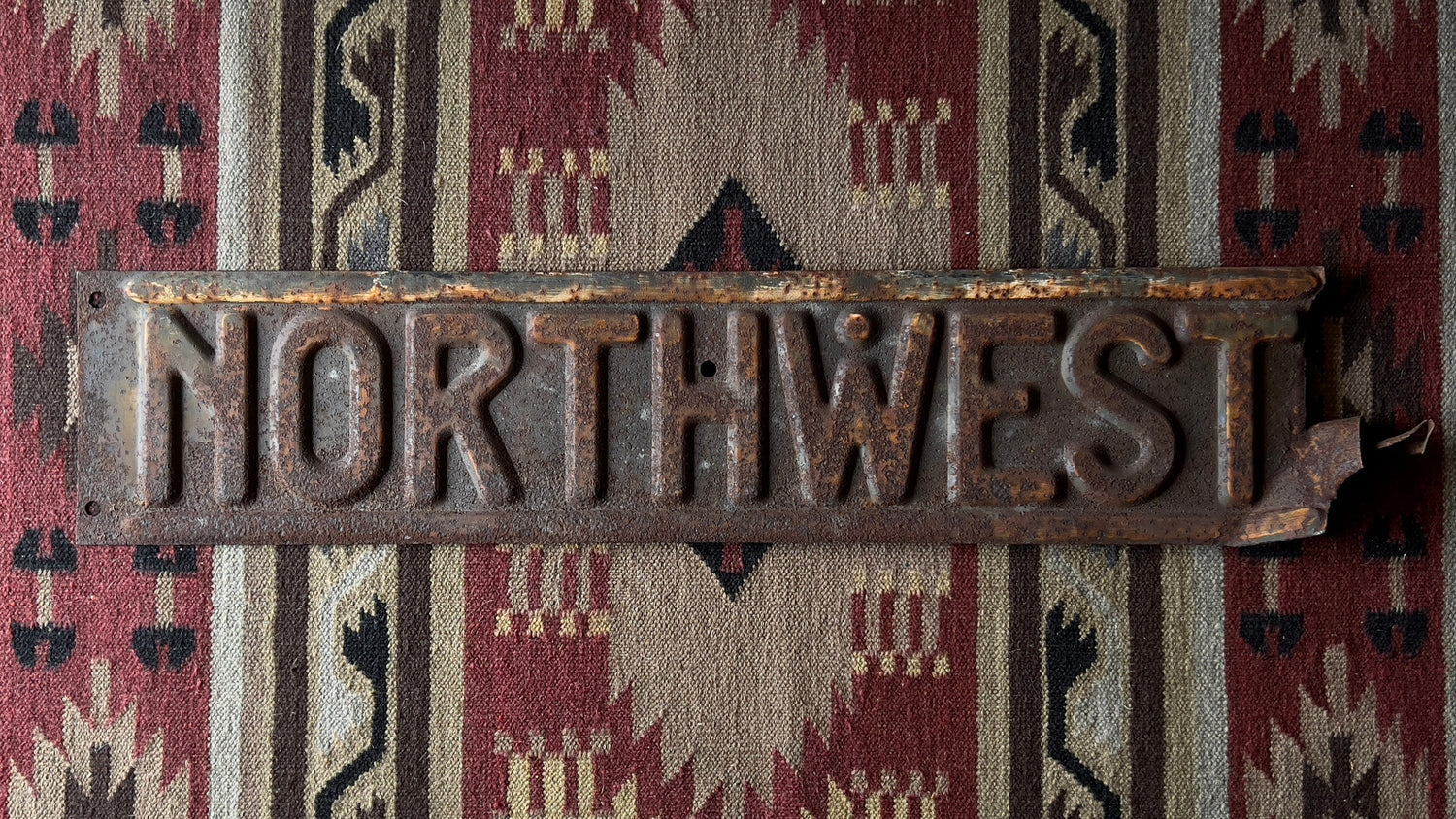
1920s
Northwest Engineering Co.
Northwest had an 82 year history, originating out of Green Bay, Wisconsin on a small plot of land tracing back to an old boat yard purchased by founder Simeon Vaughn in 1873. After converting to self-propelled cranes and manufacturing, the company saw over 20,000 prepared units before their eventual closure in 1990. This metal sign has been through a lot of weathering over time, but it makes for a great wall piece for our shop.
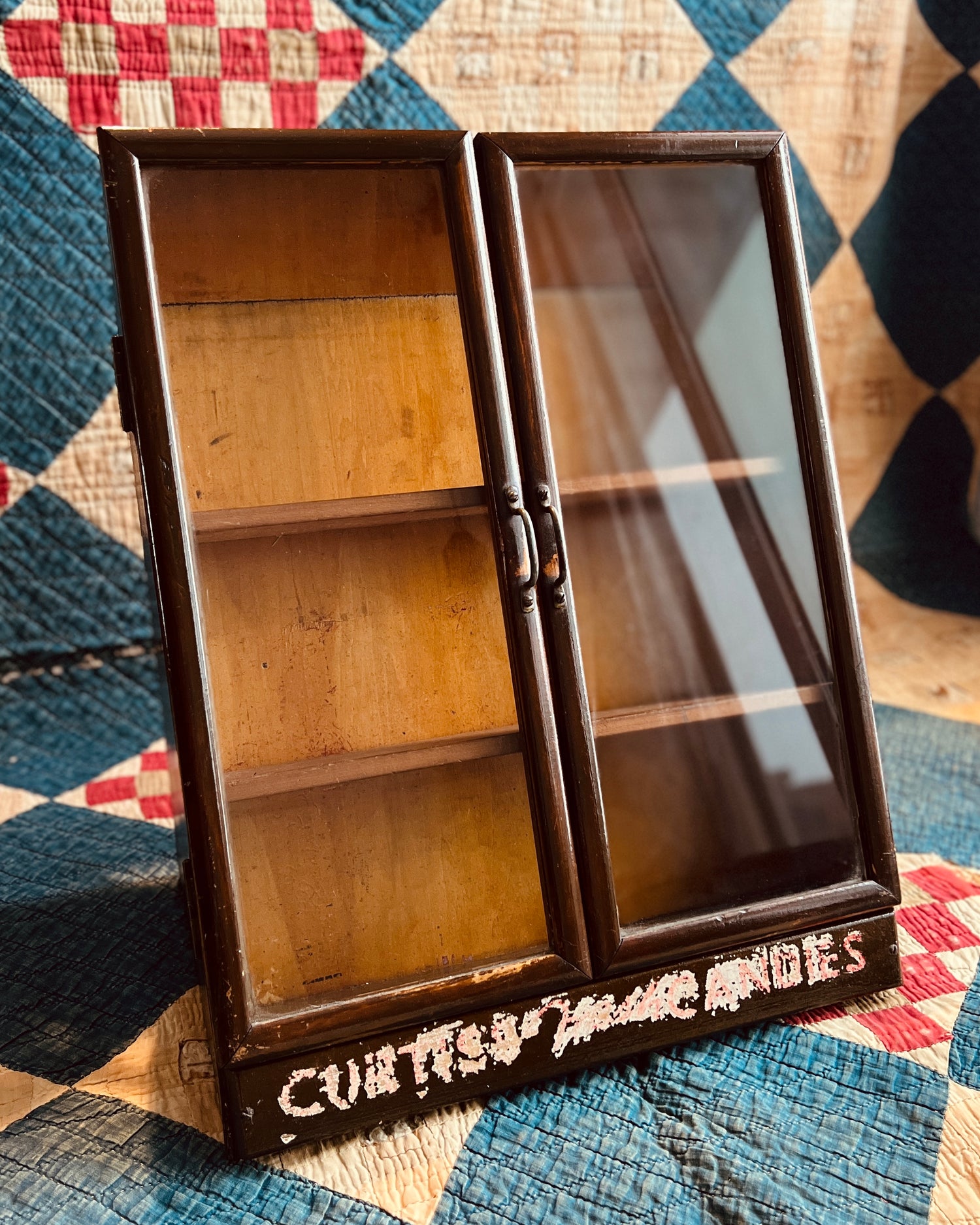
1930s
Curtiss Candy Co.
Founded in Chicago back in the year 1916 by a man named Otto Schnering, Curtiss Candy Co. quickly became a popular confectionery name amongst chicagoans. Surpassing over $100k in sales his first year of business, the Curtiss Candy Co. arose due to the introduction of the Butterfinger and Kandy Kake, or also known as the Baby Ruth bar. Schnering would go on to expand his business in the chicago area and eventually the company would be sold to Nabisco, and eventually Nestle towards the late 20th century.
Here is an early wooden and glass slanted display cabinet- featuring two panel glass doors, brass handles, lightened wood inside, and Curtiss 'Hard' Candies branding on the bottom. It is in excellent condition and will now be used to display ThreadCount products and small accessories.
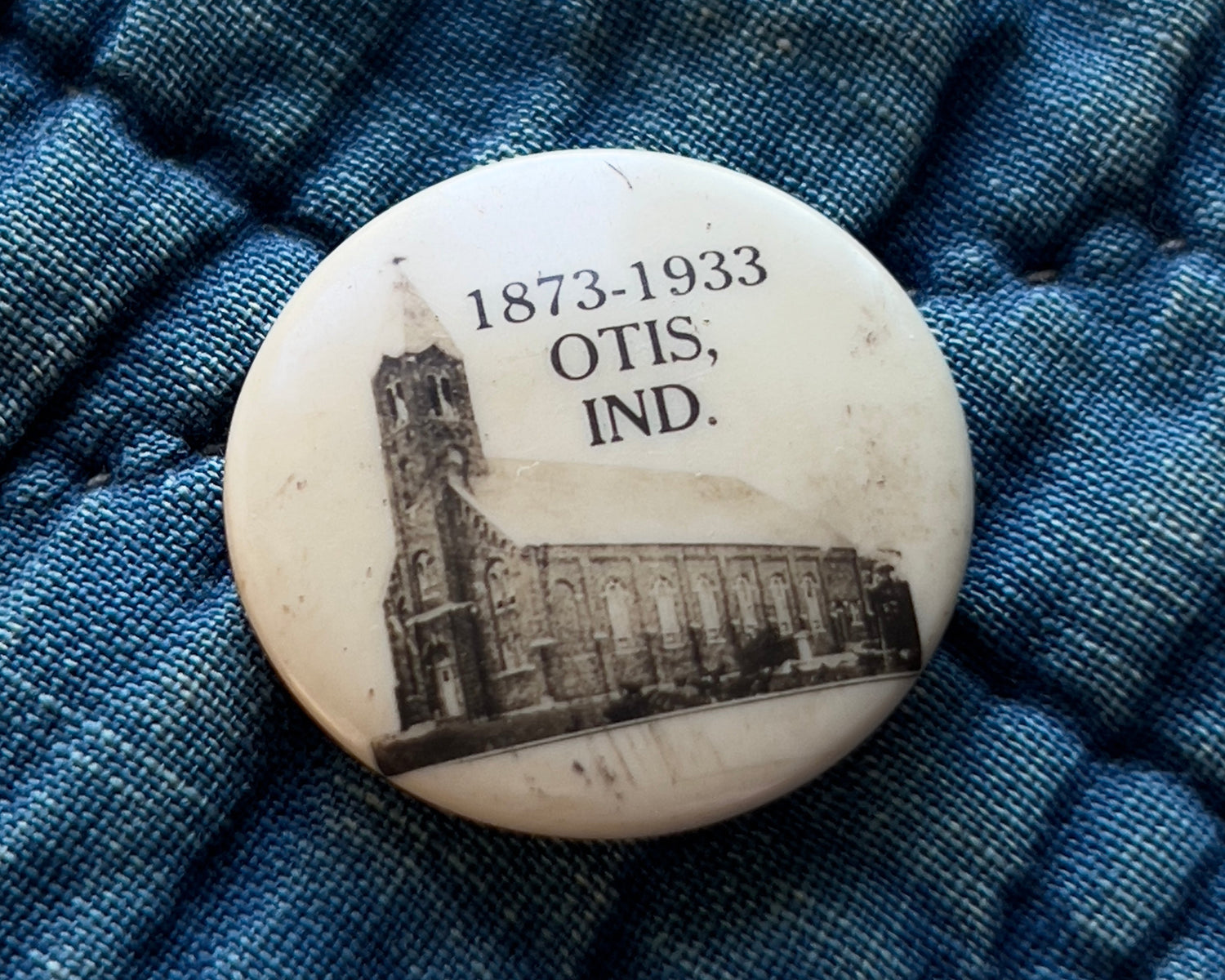
1800s


